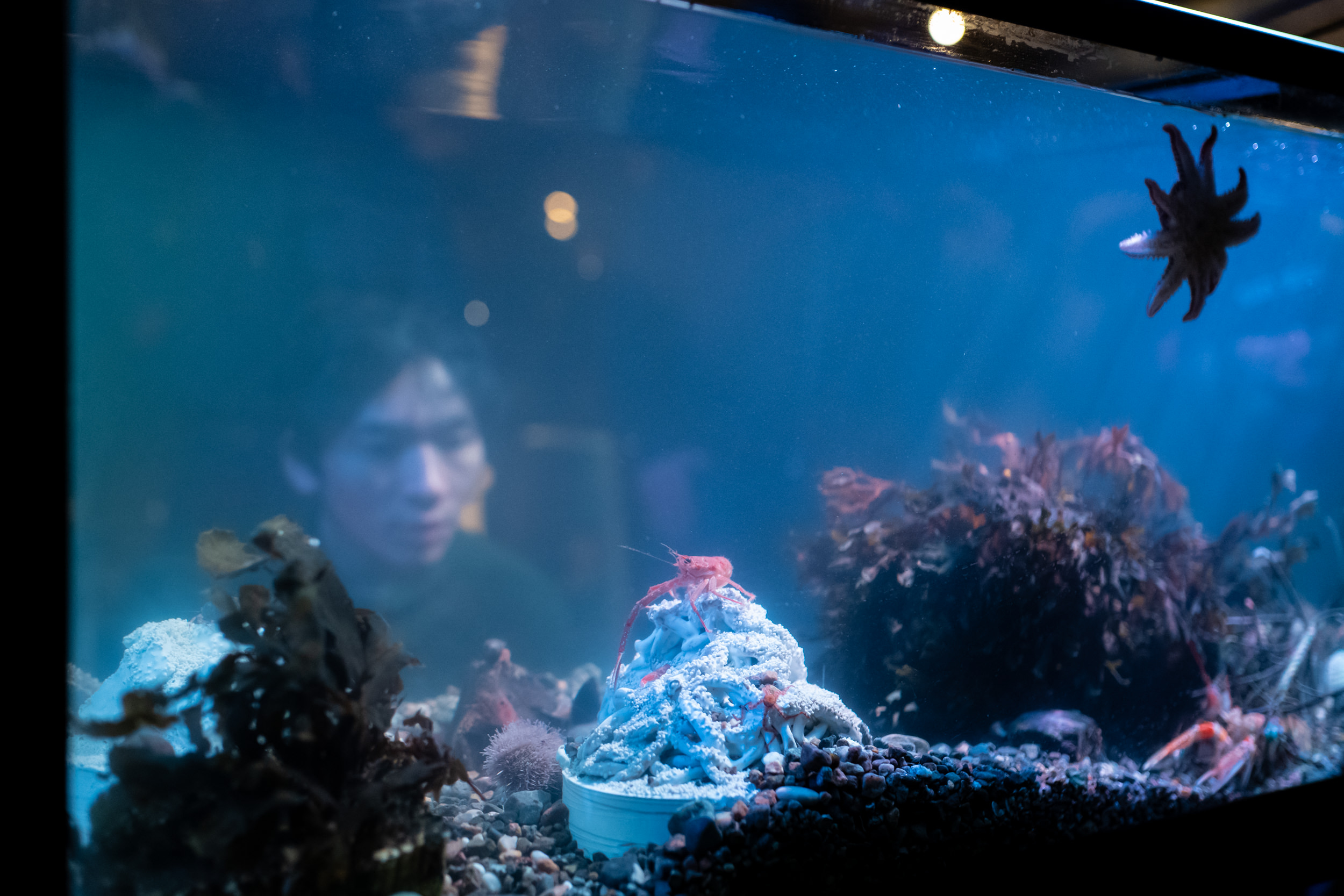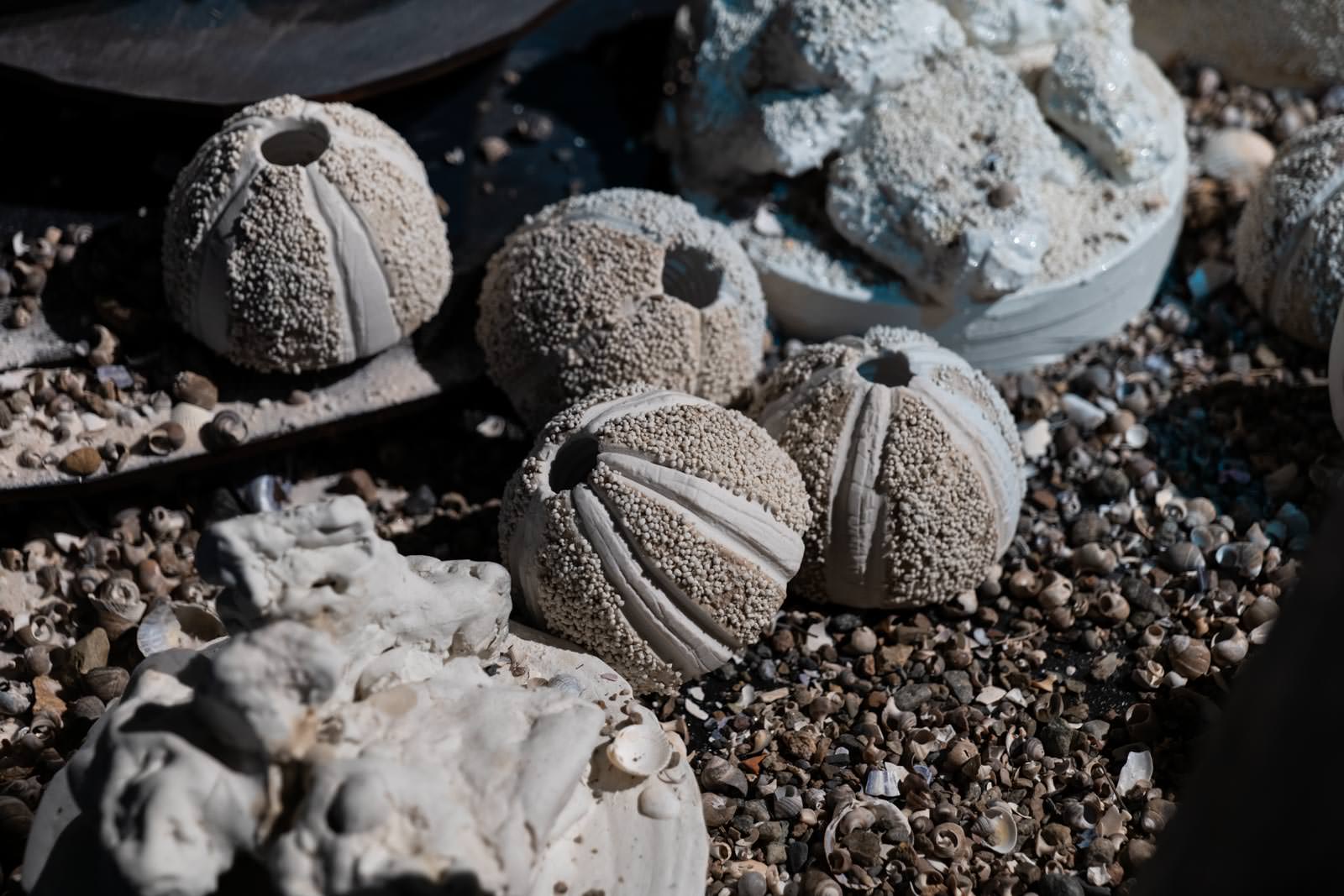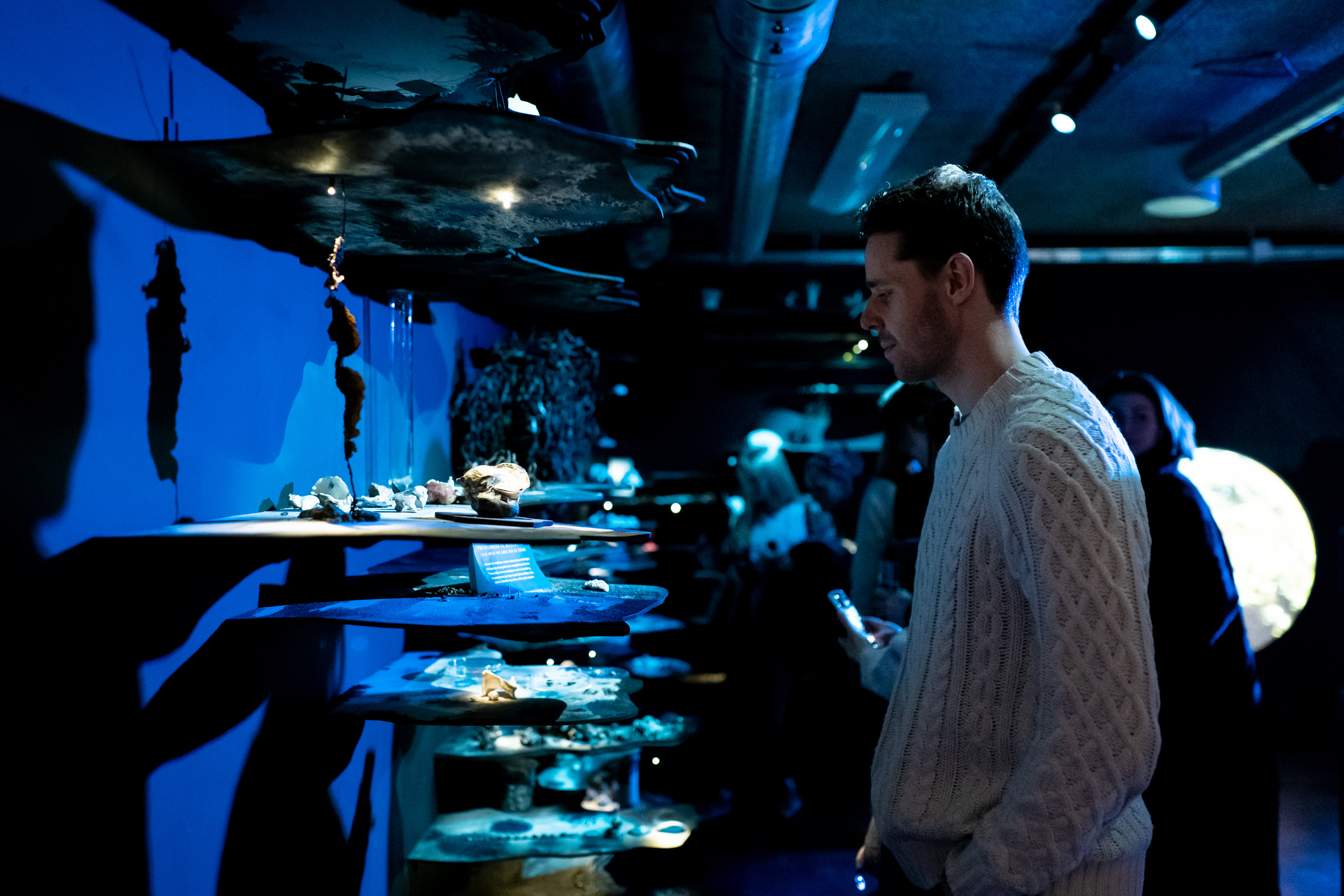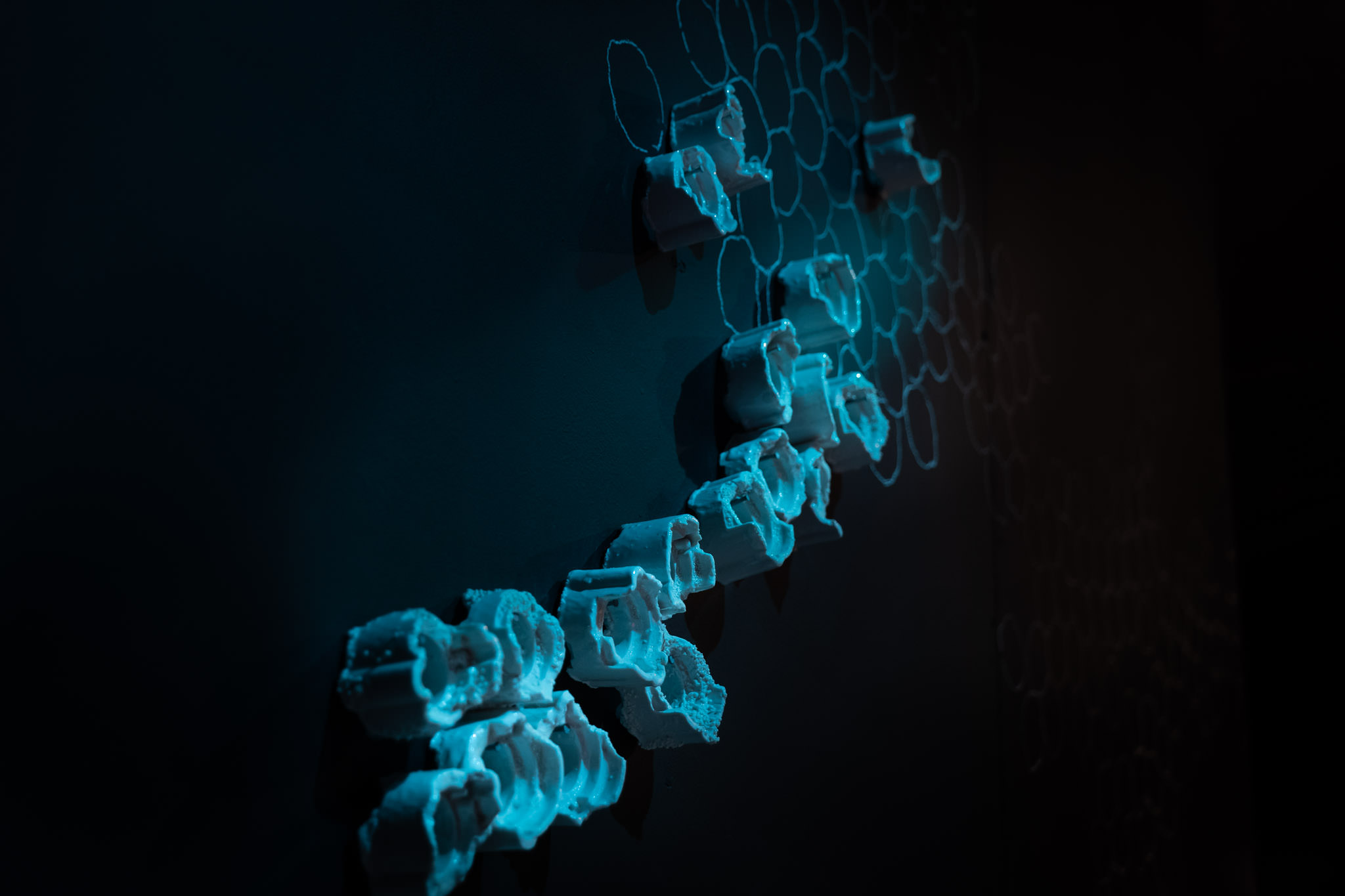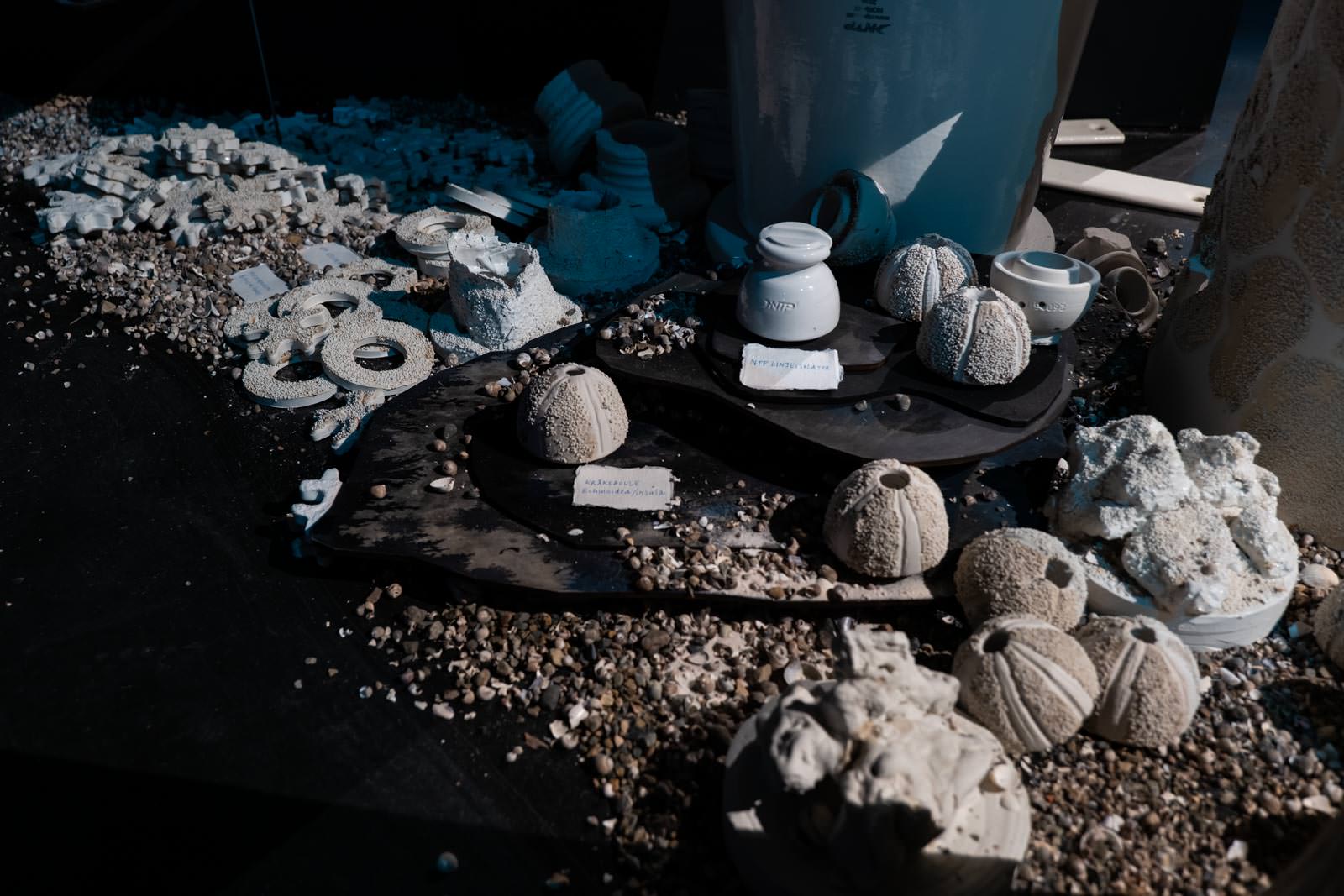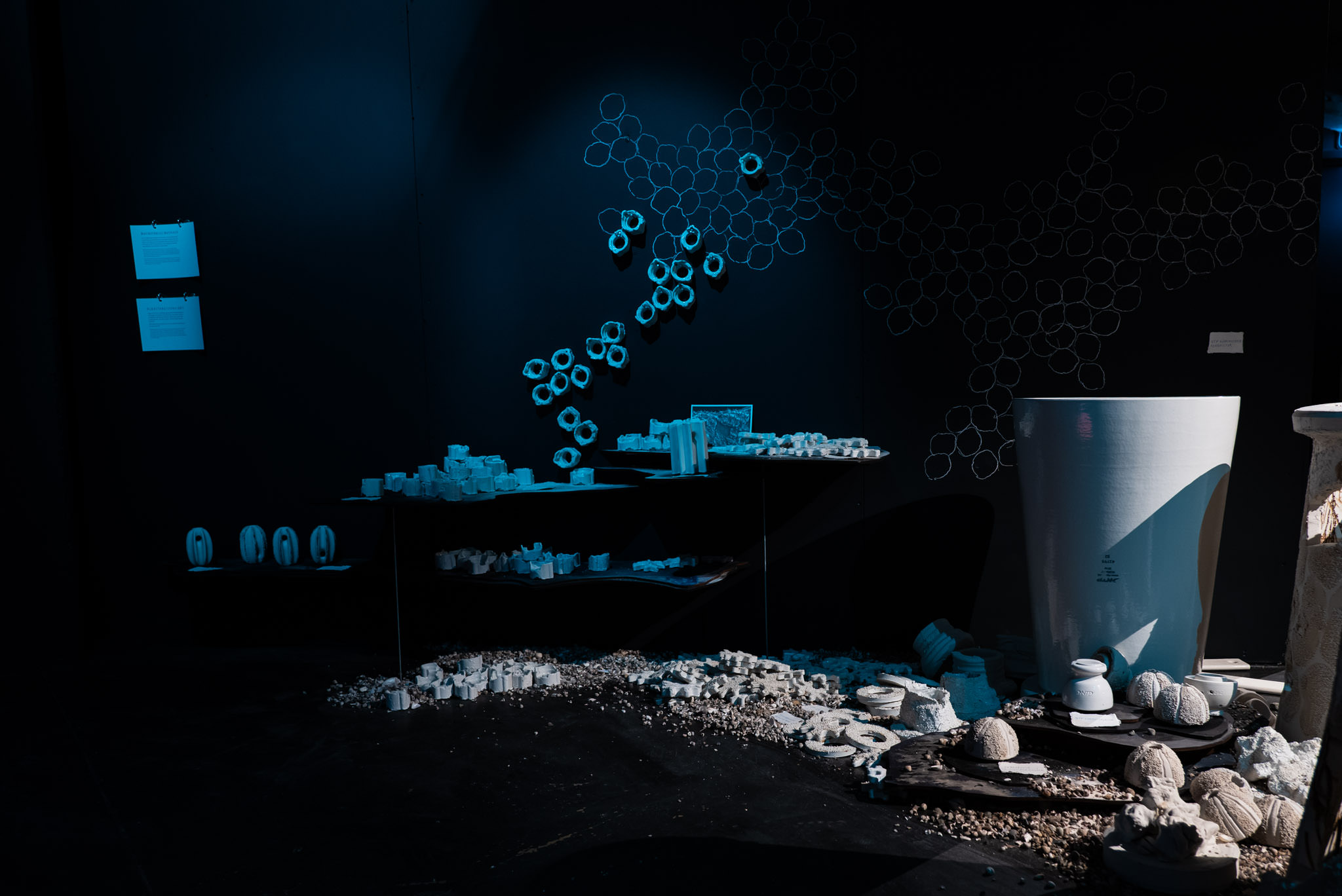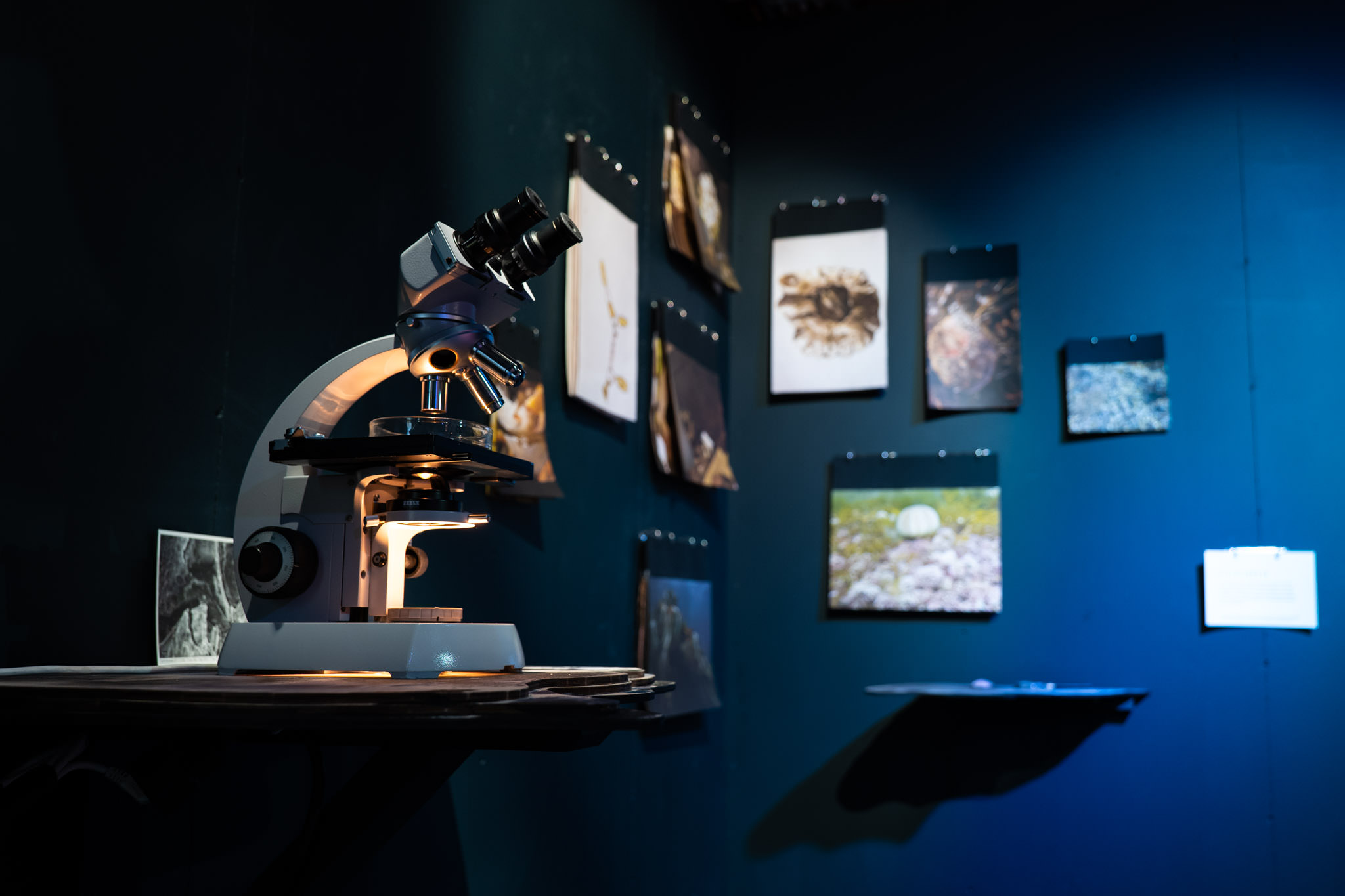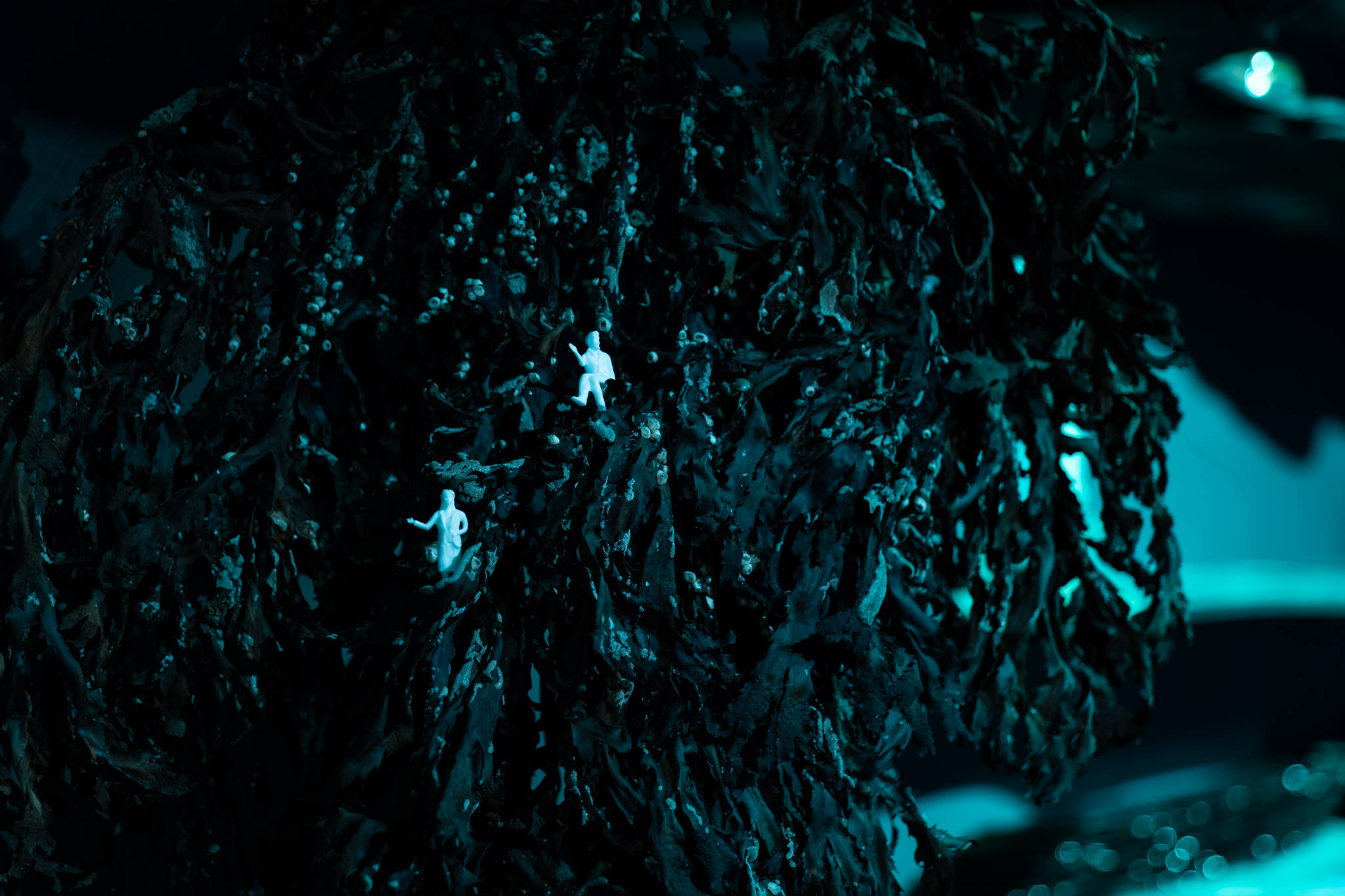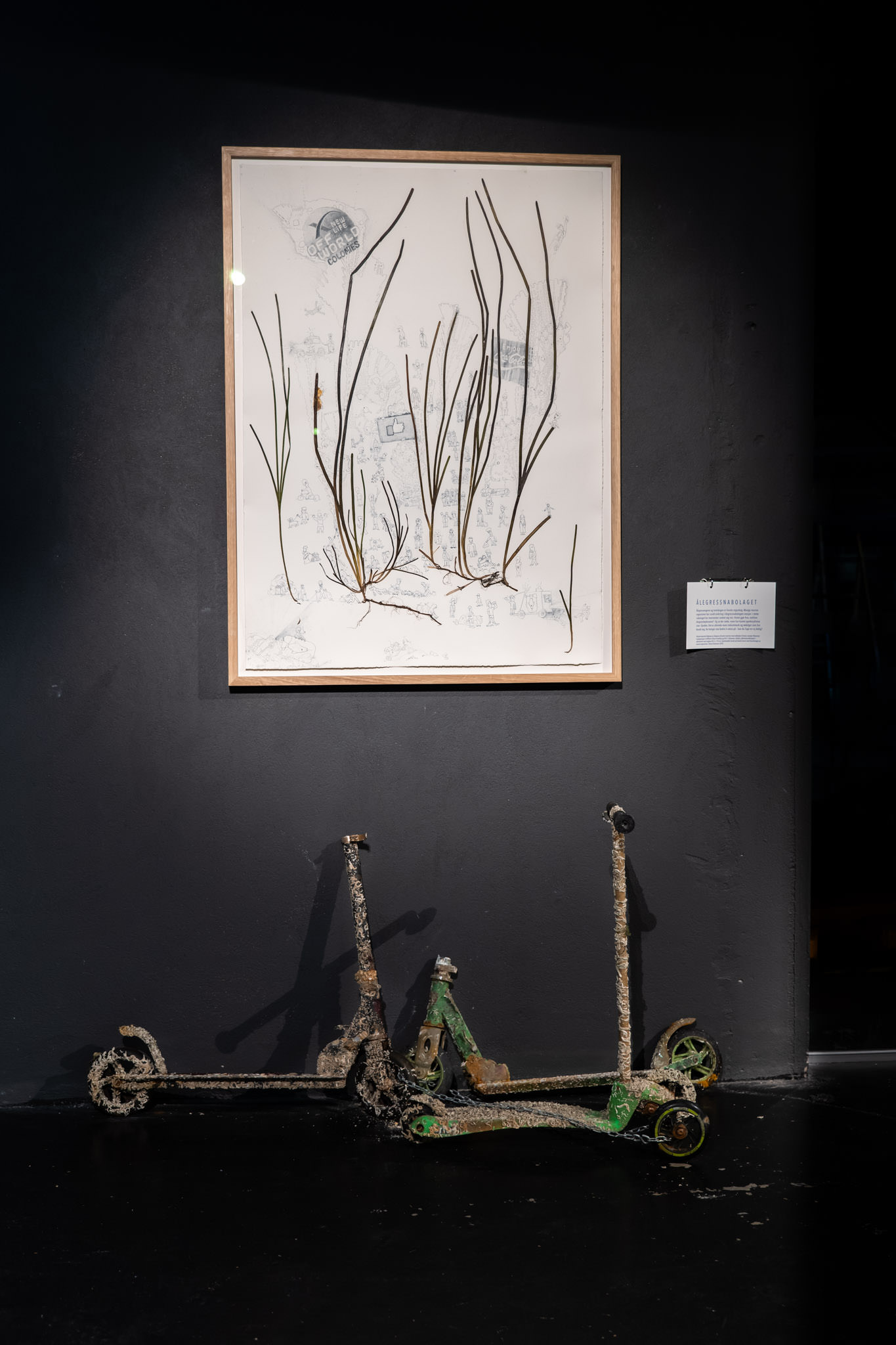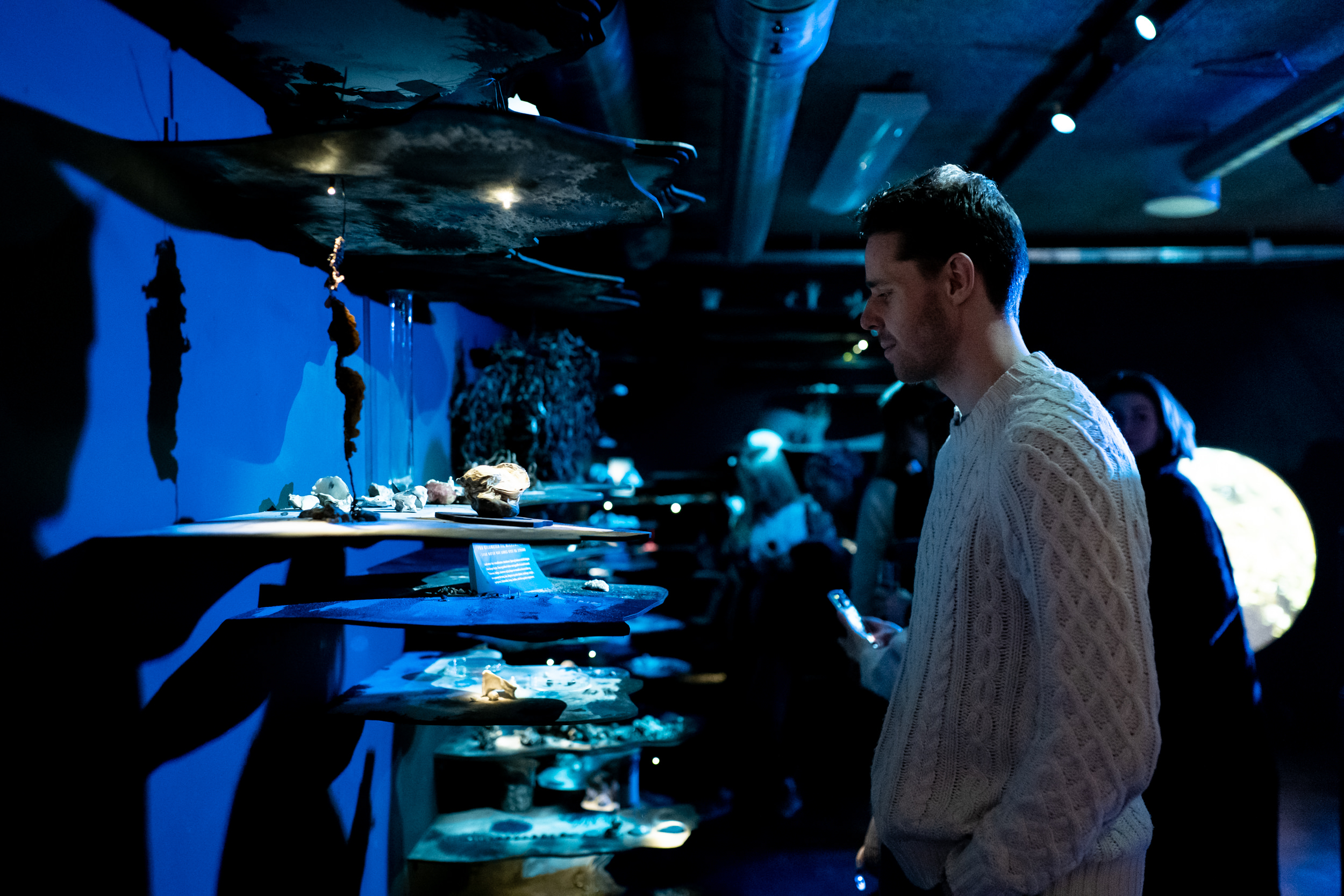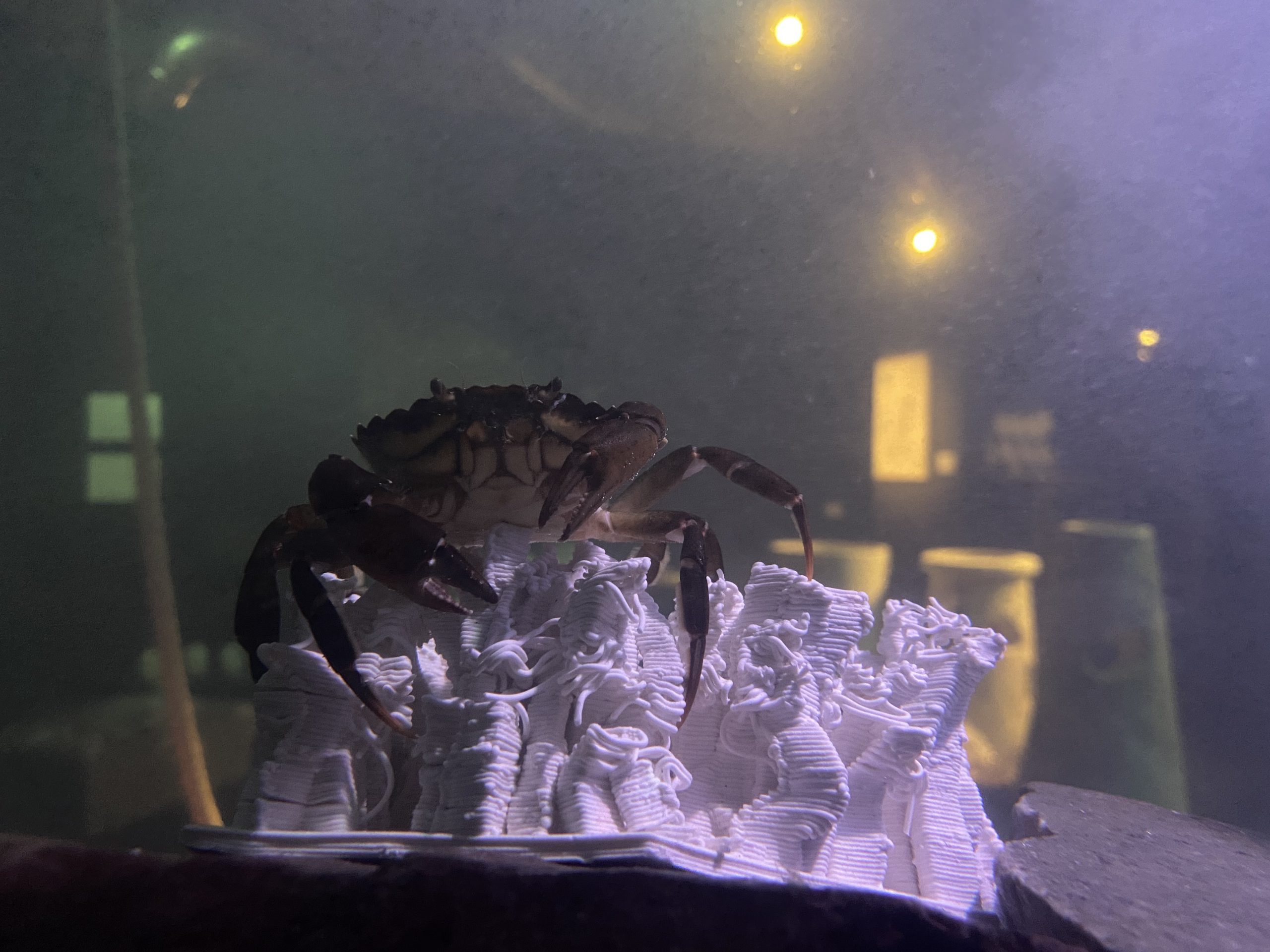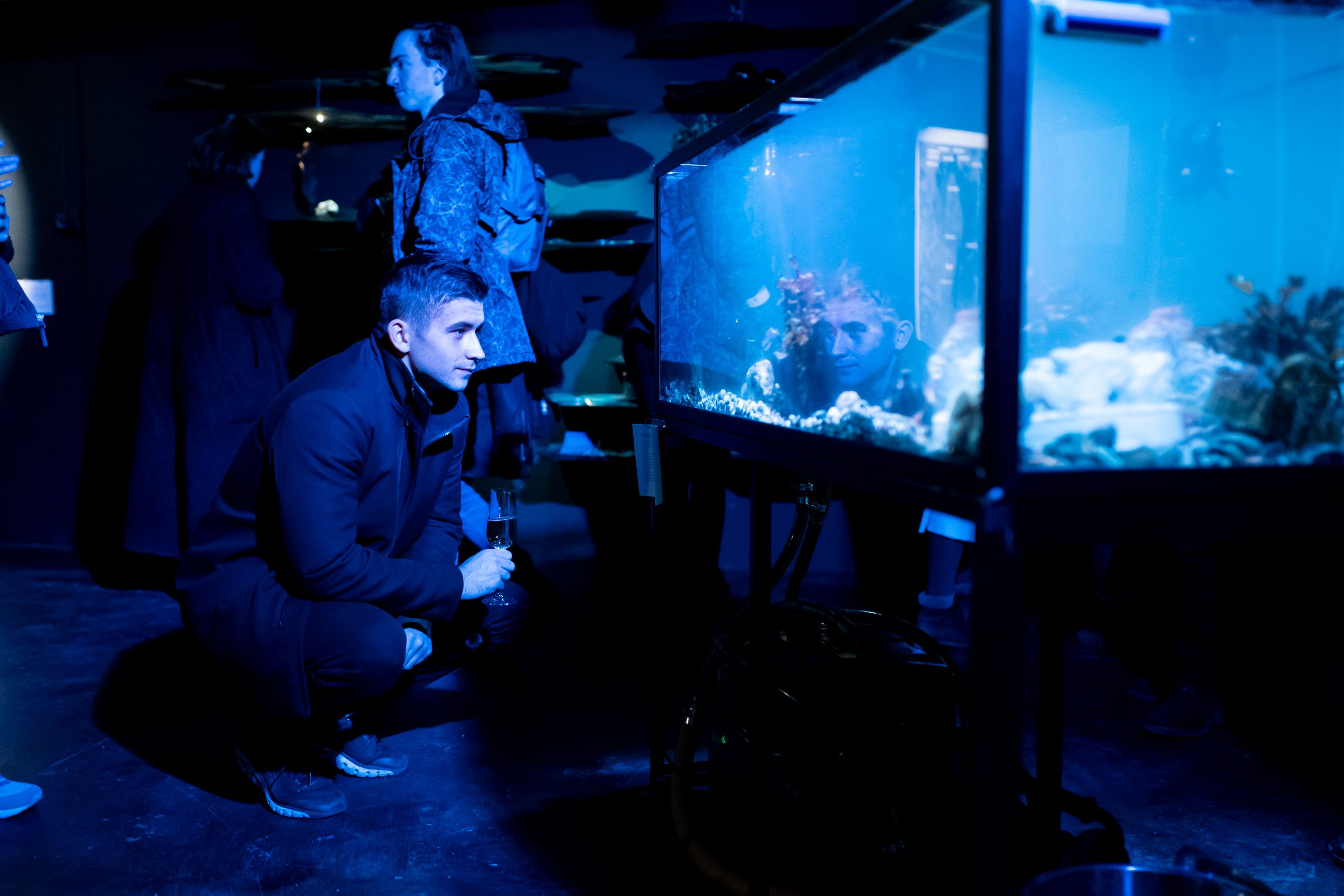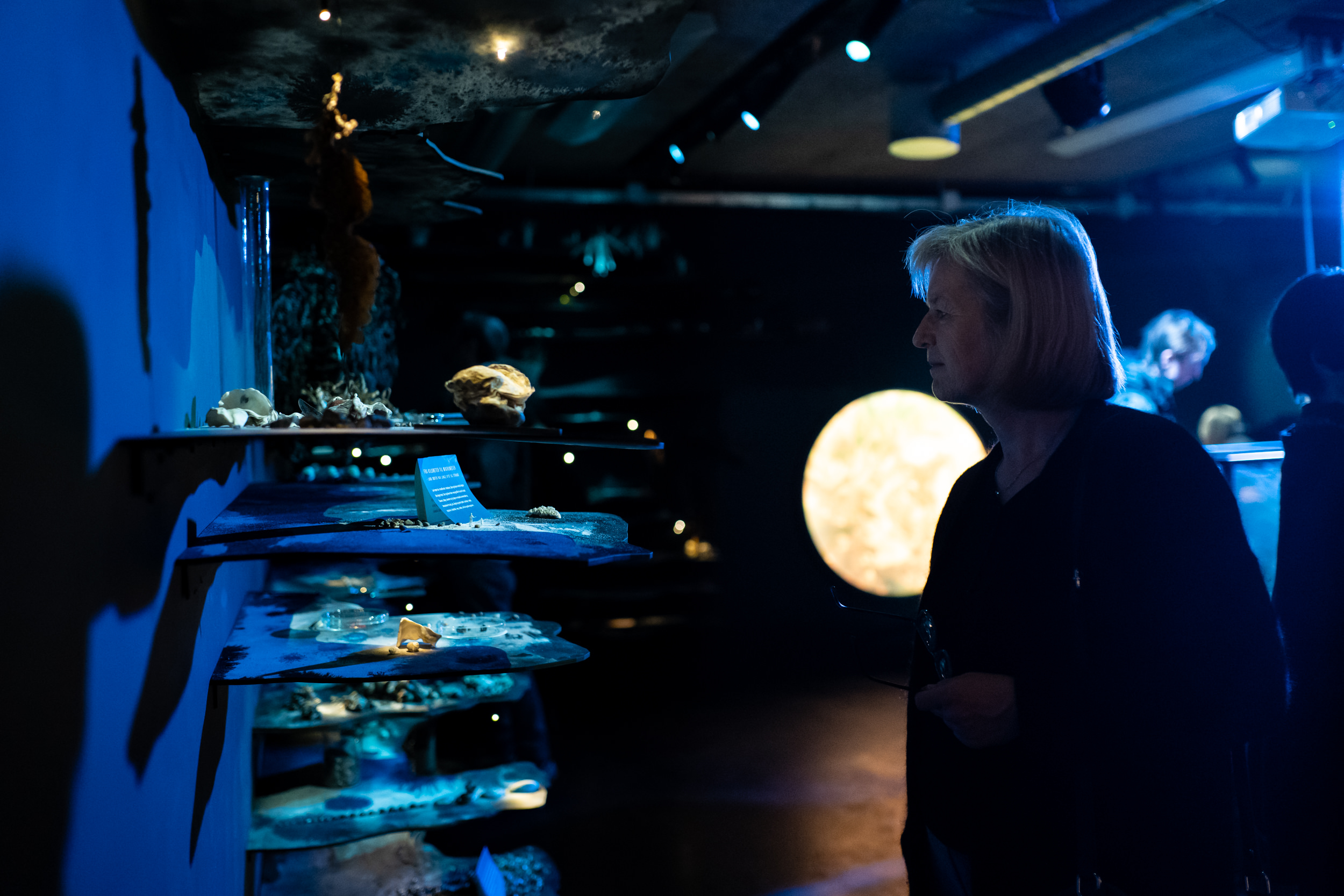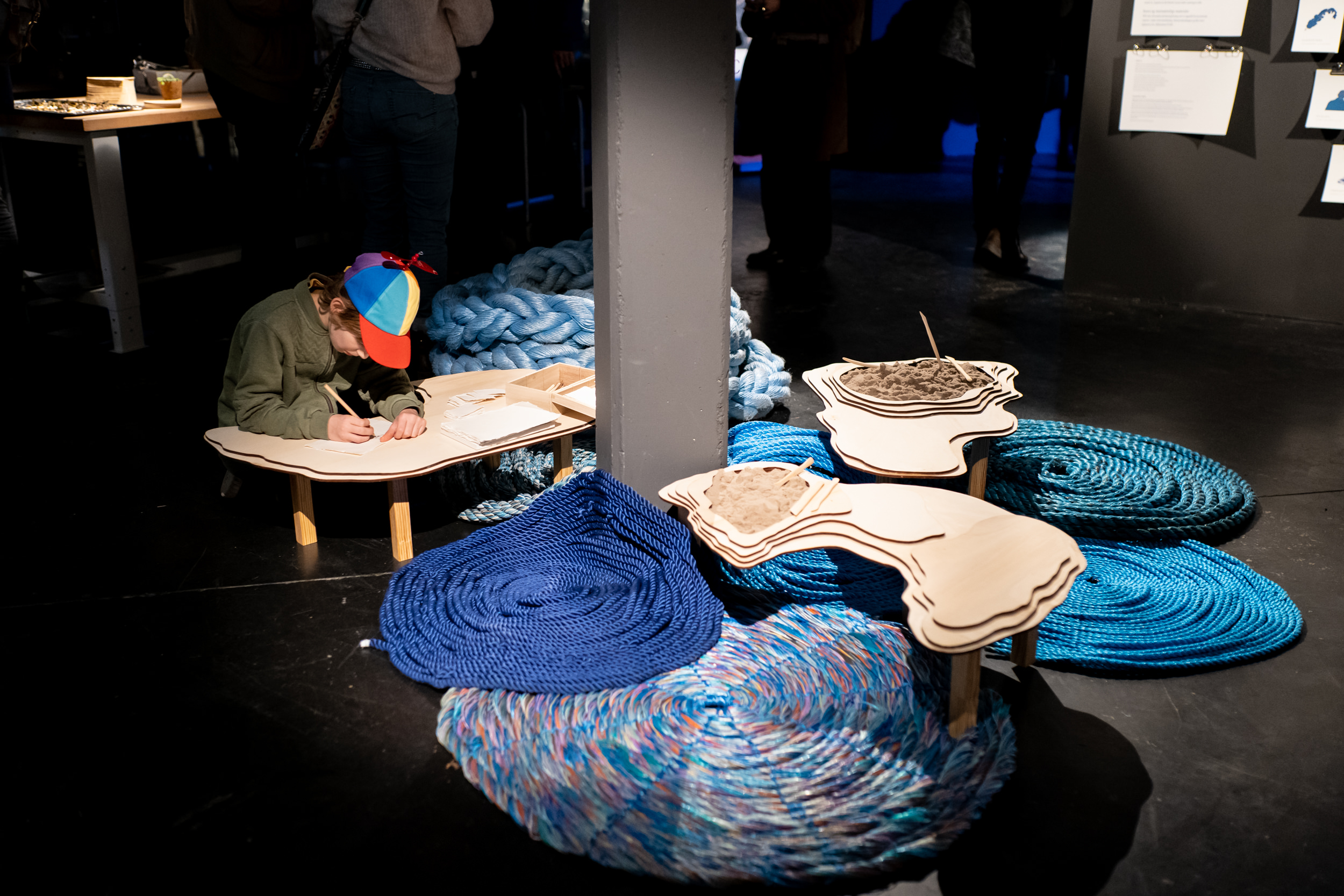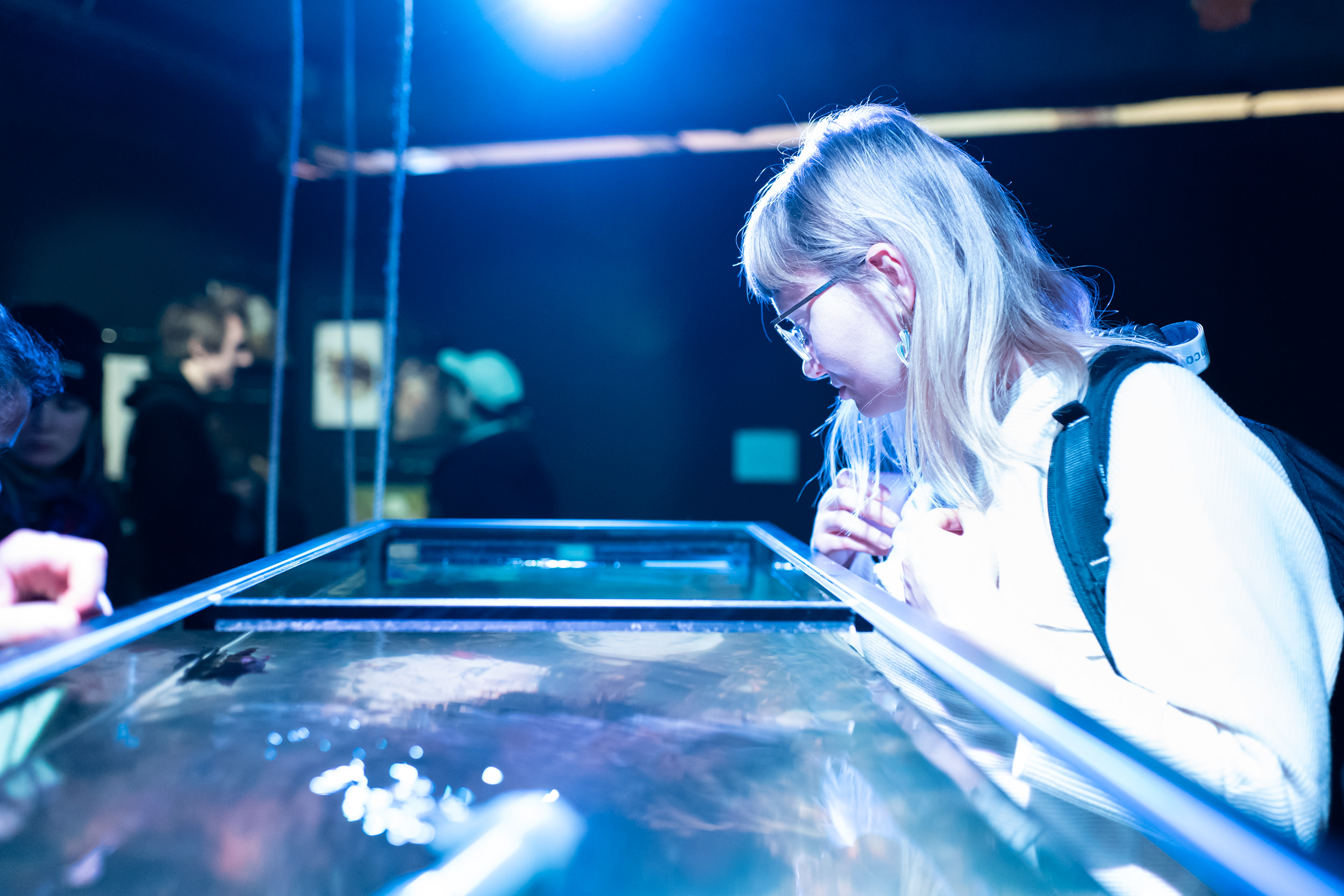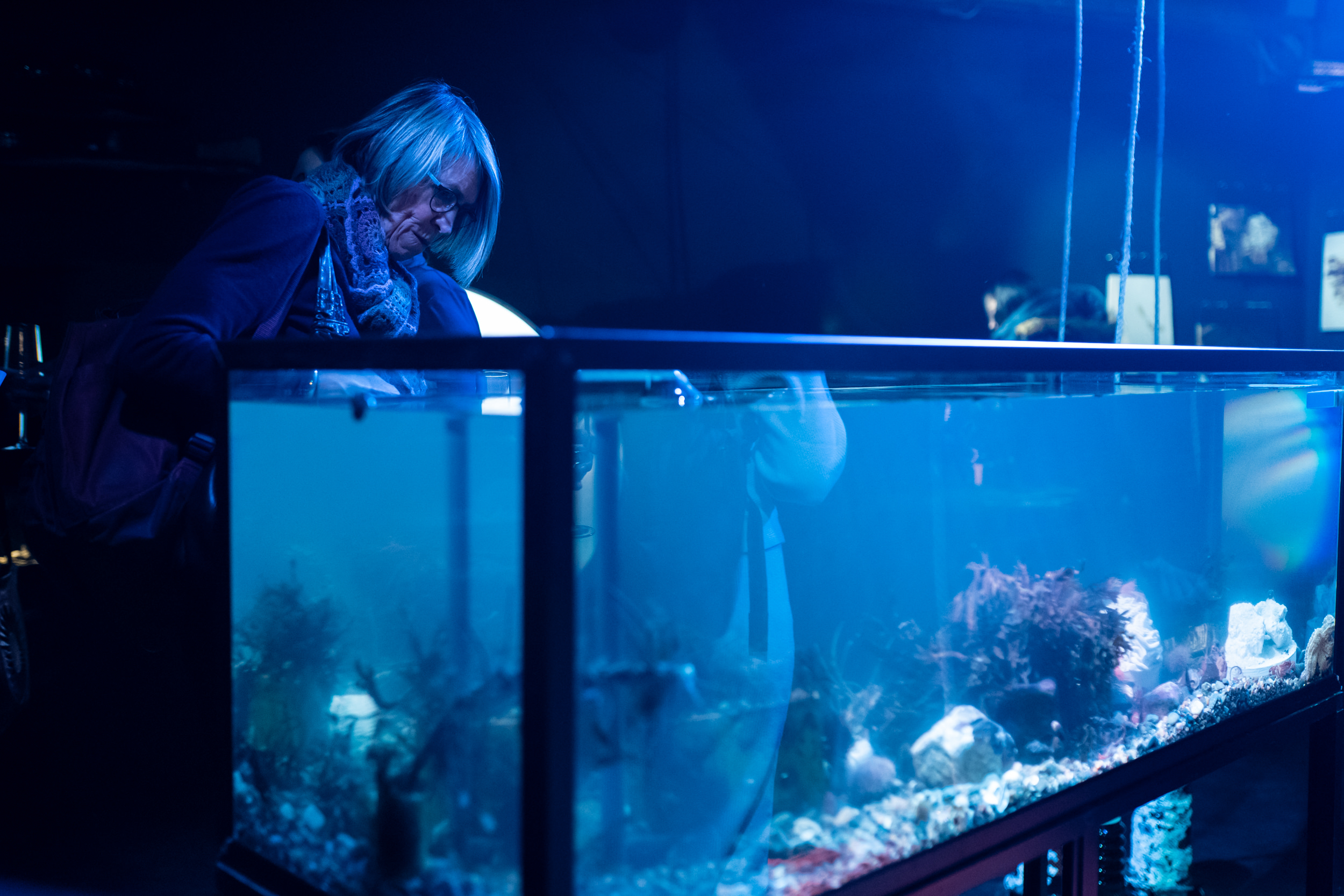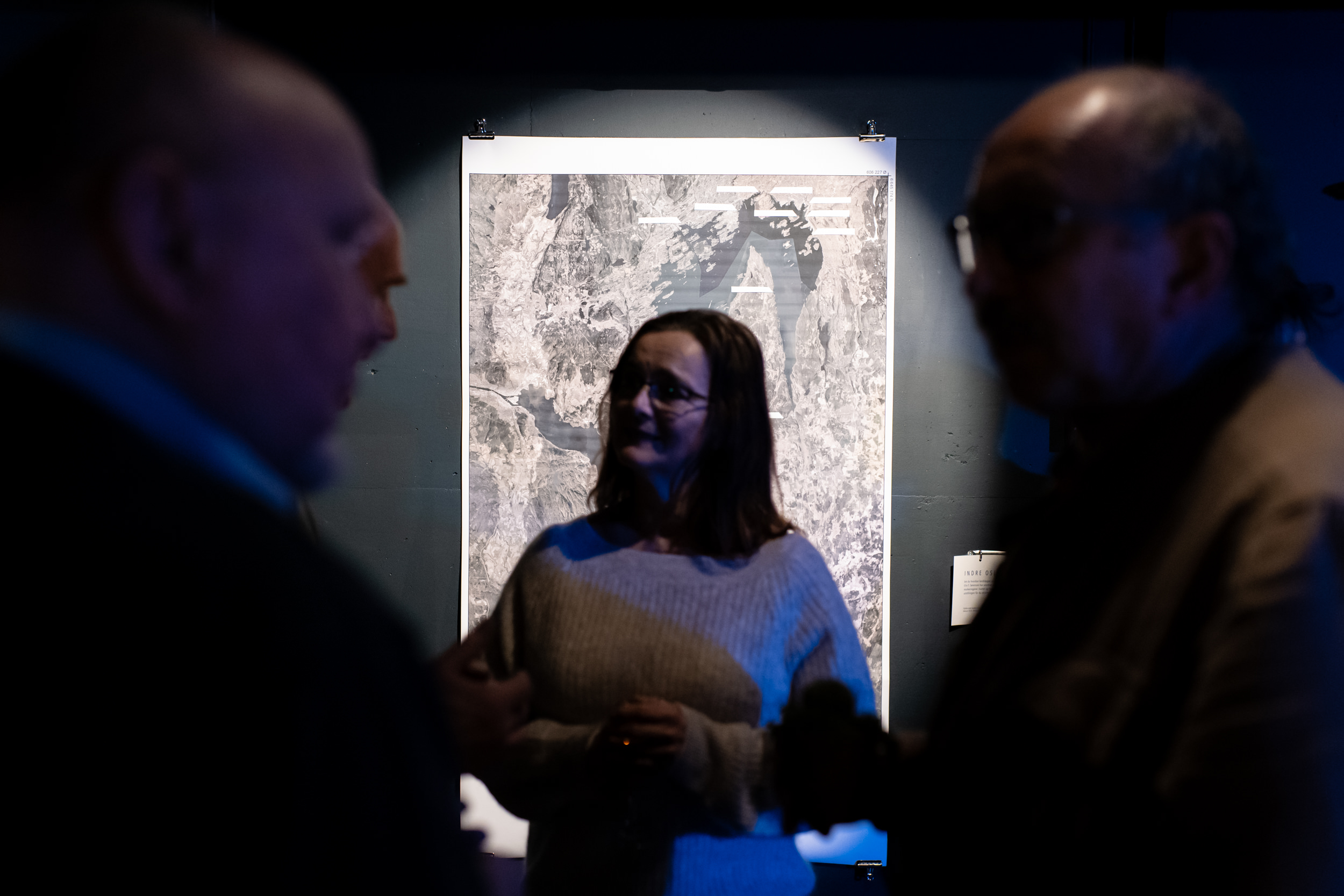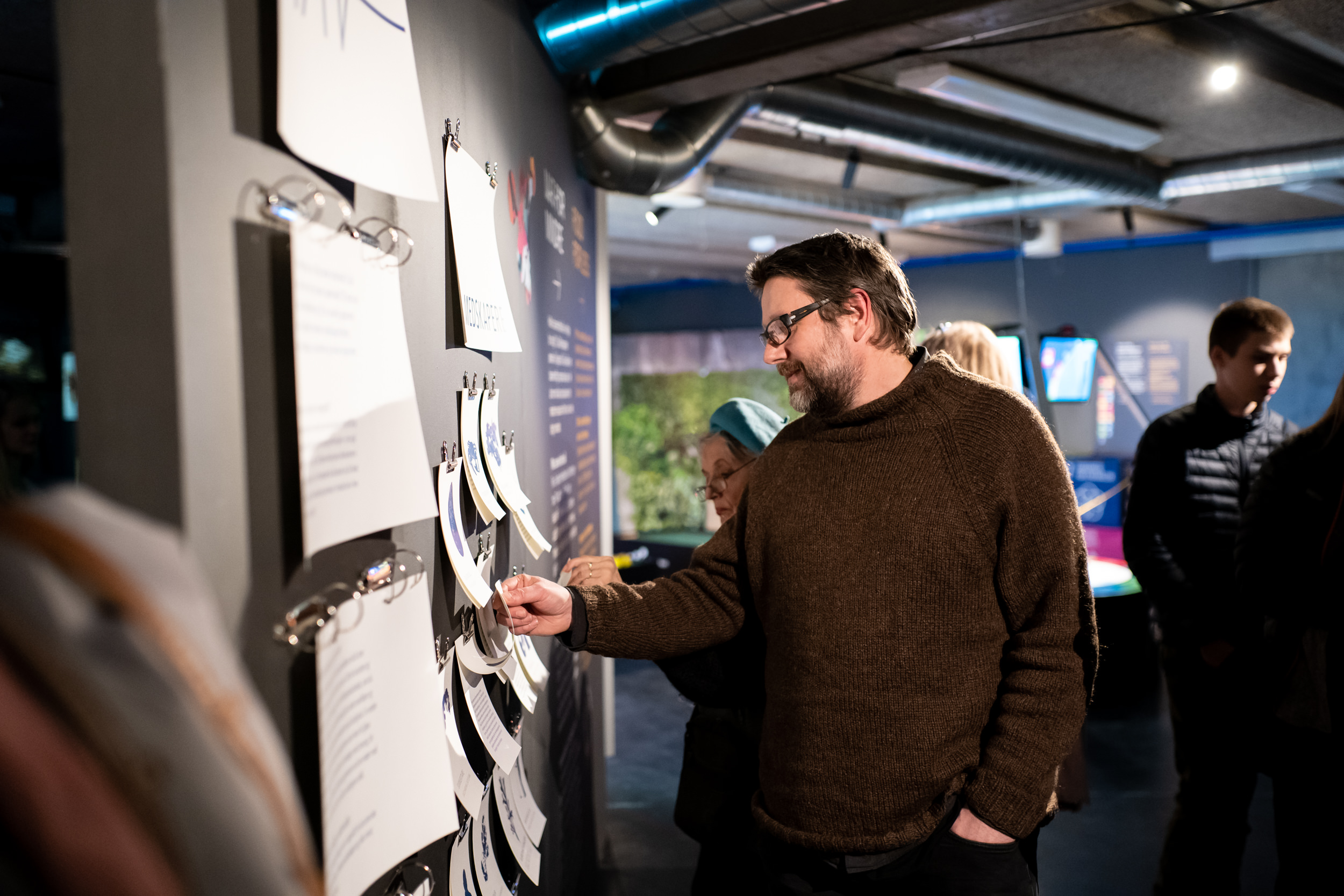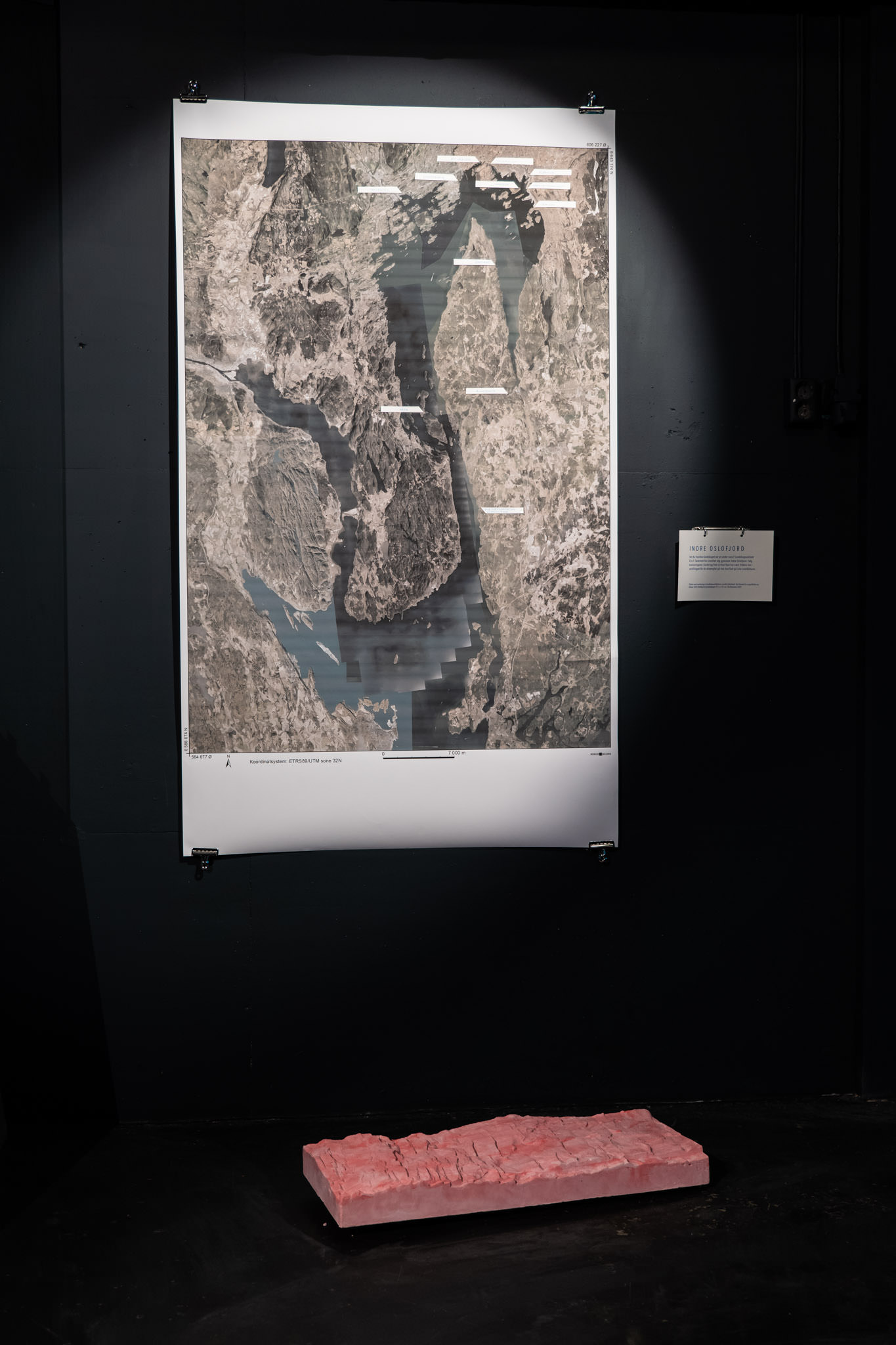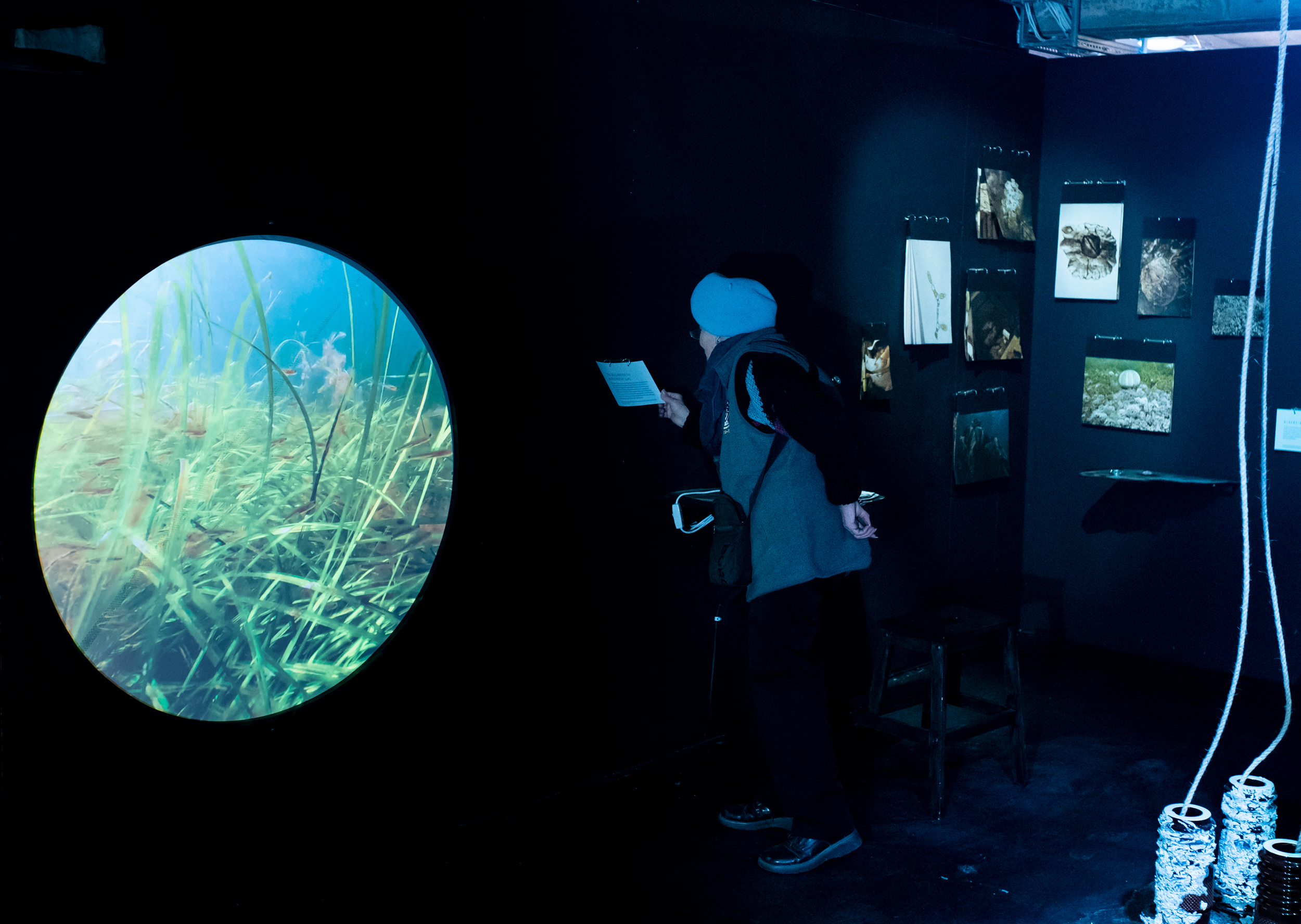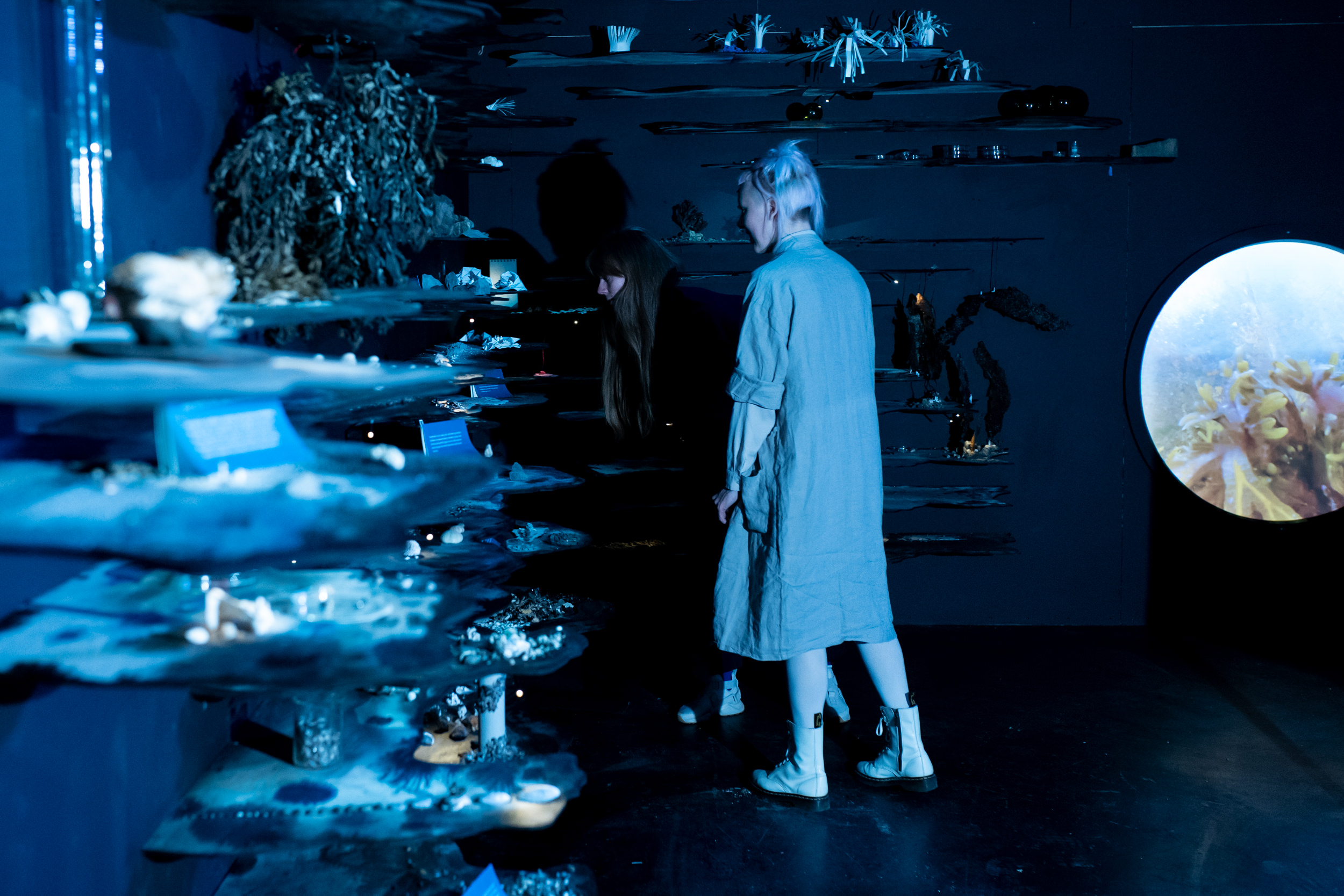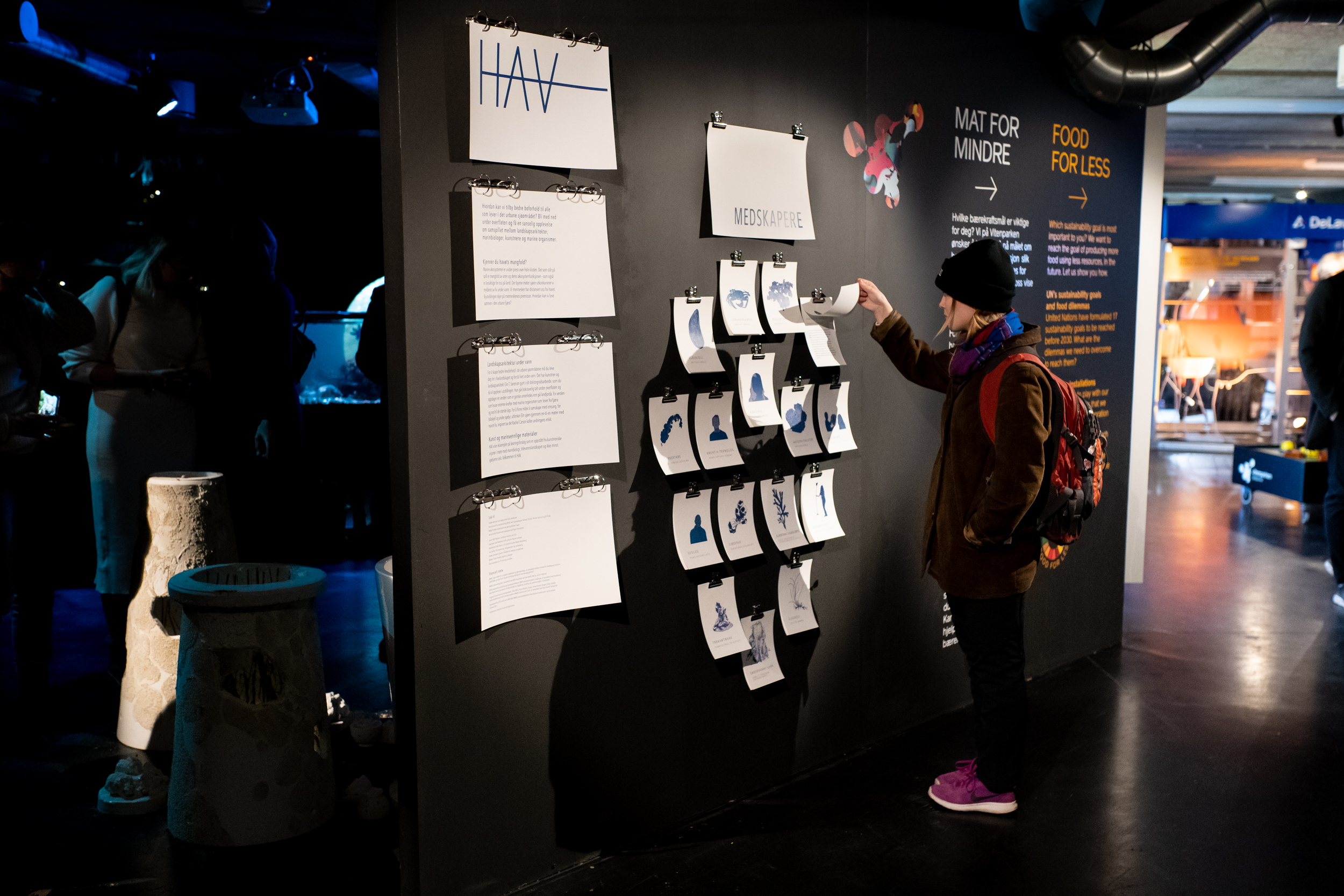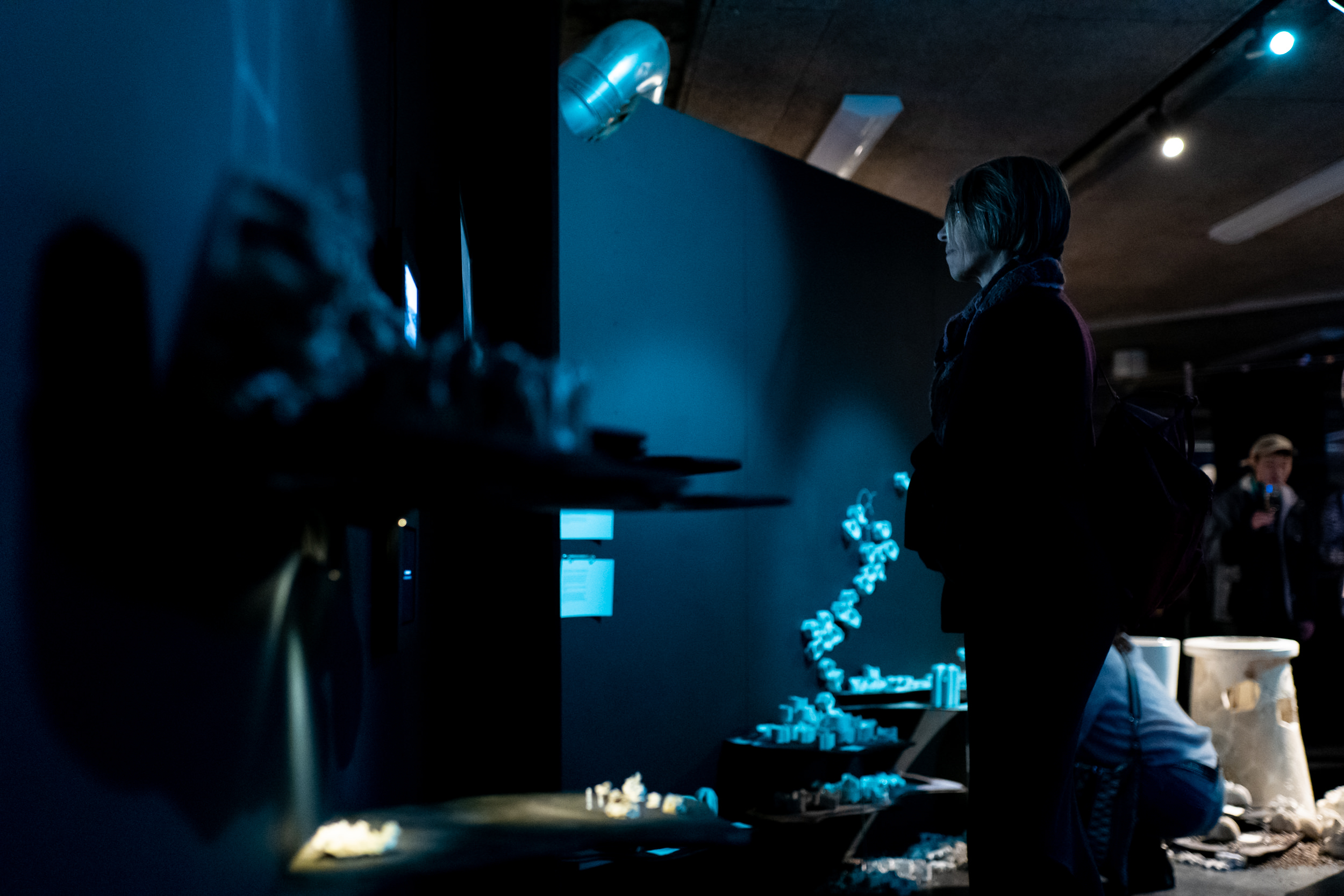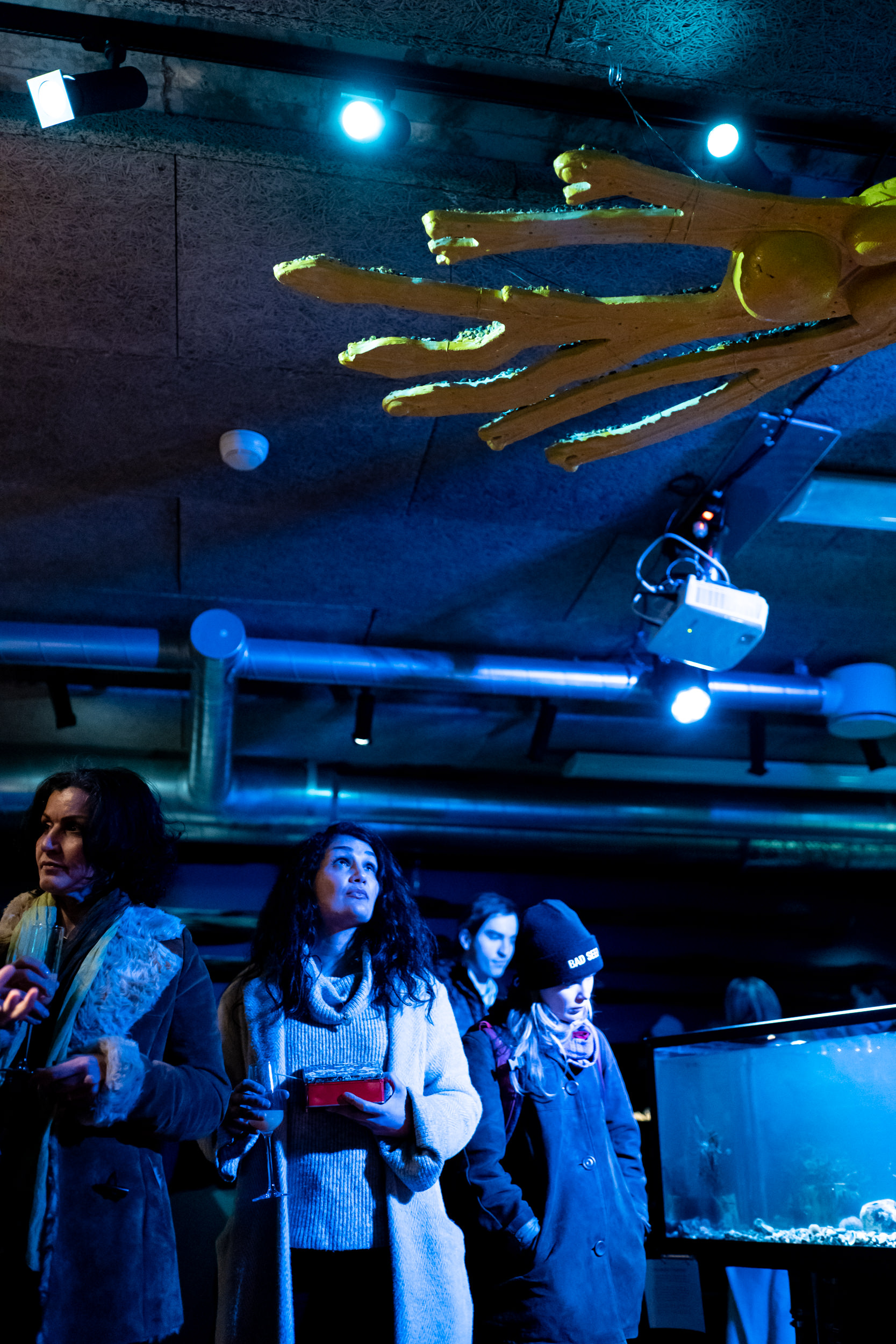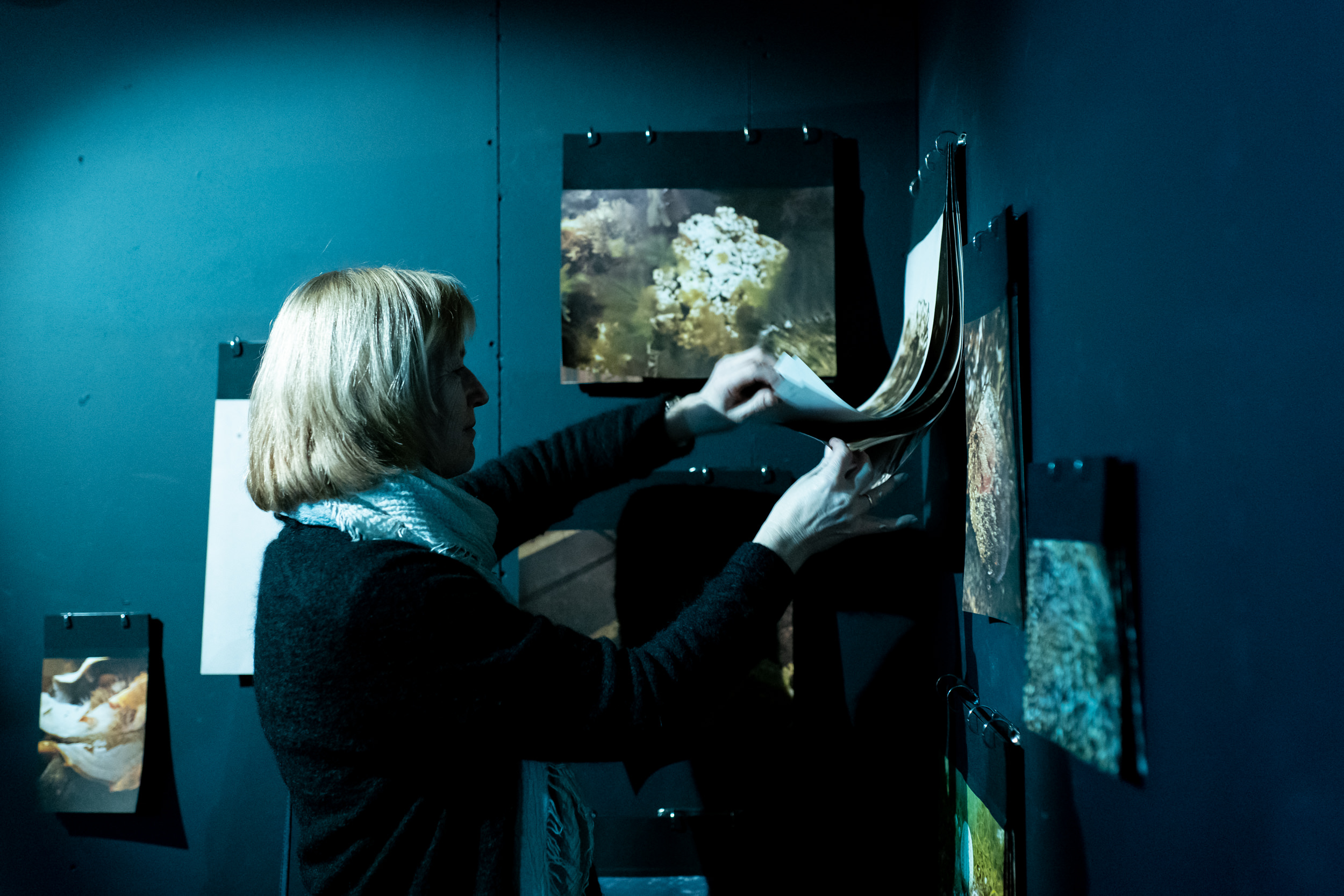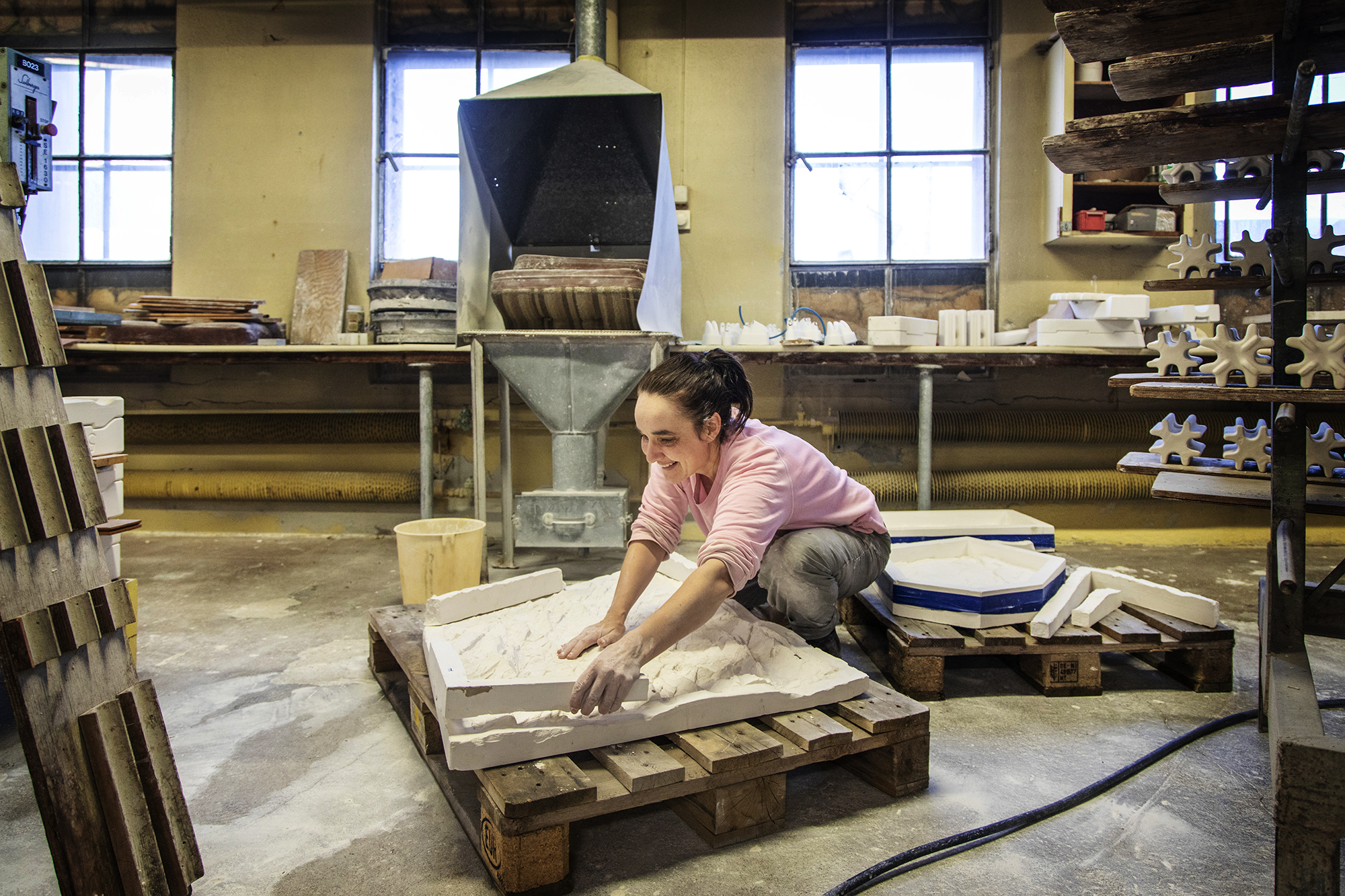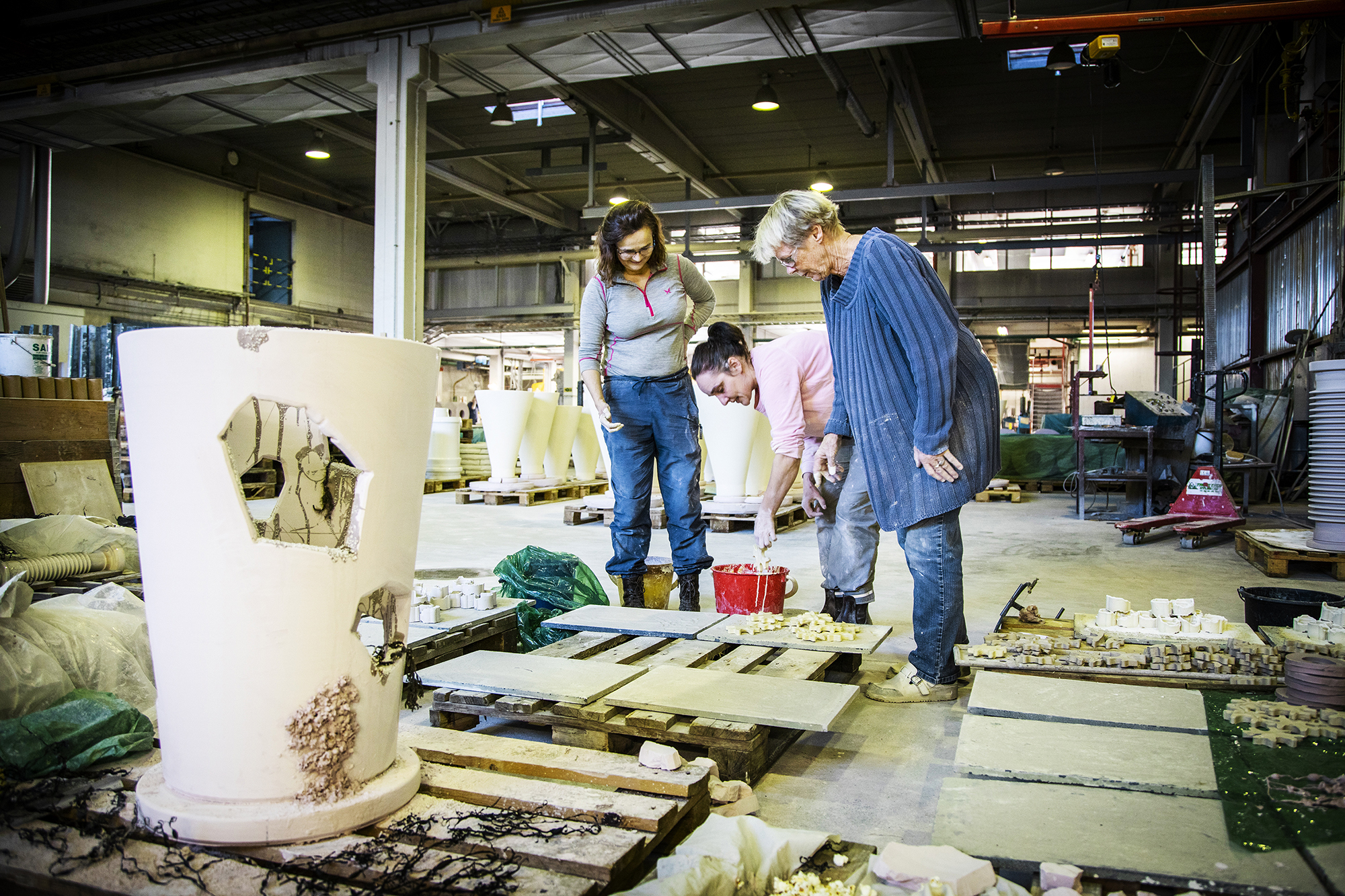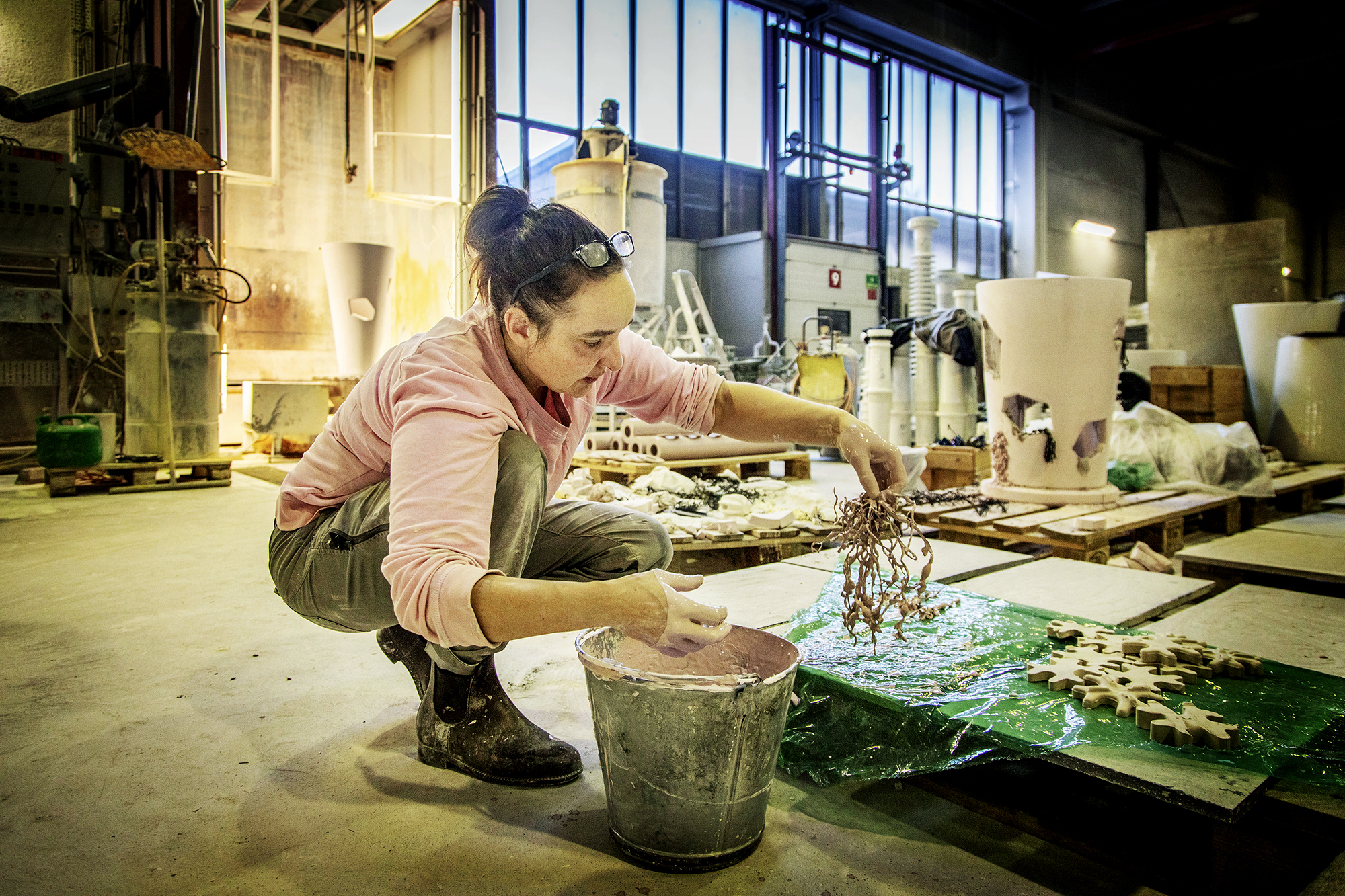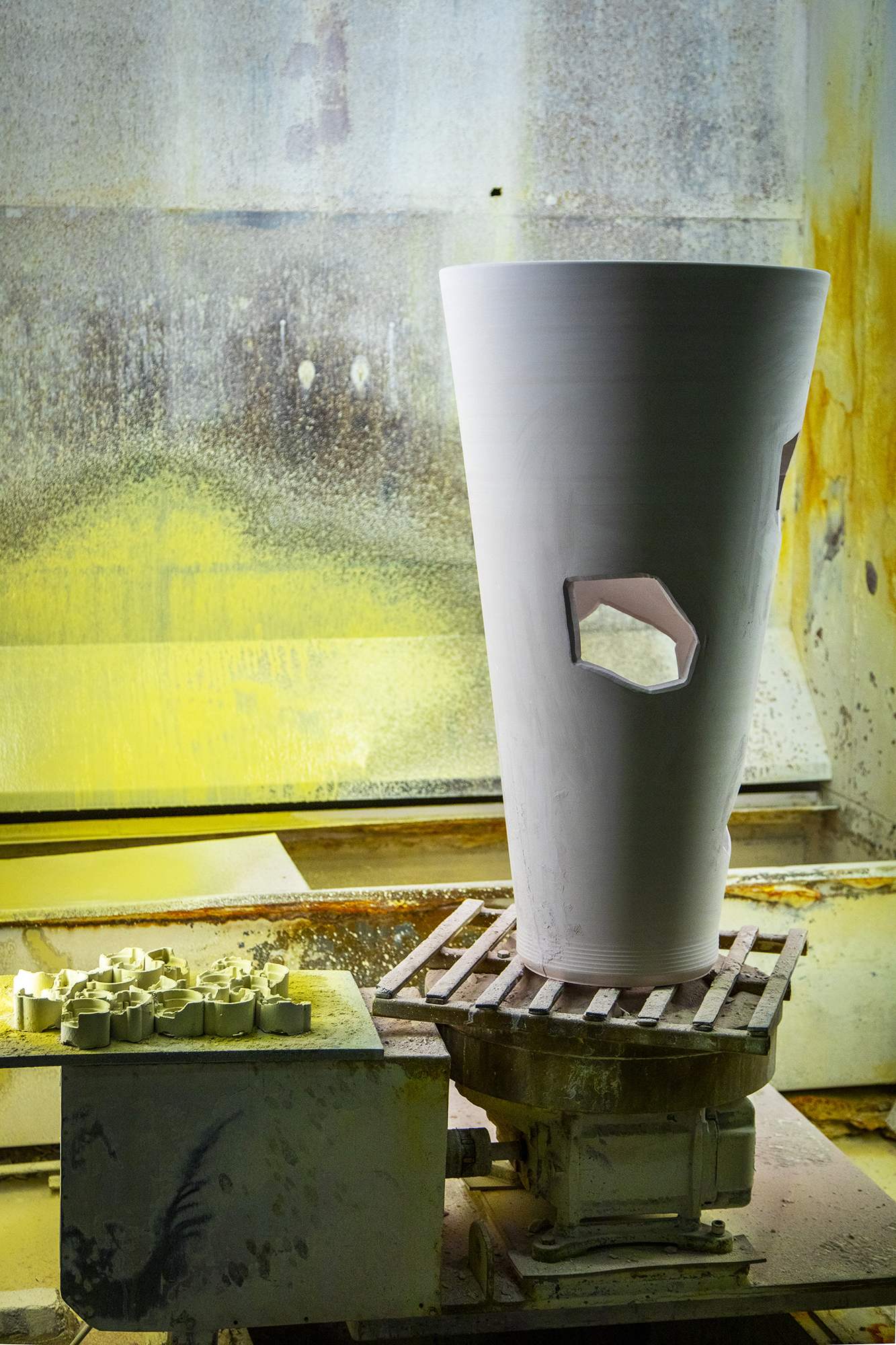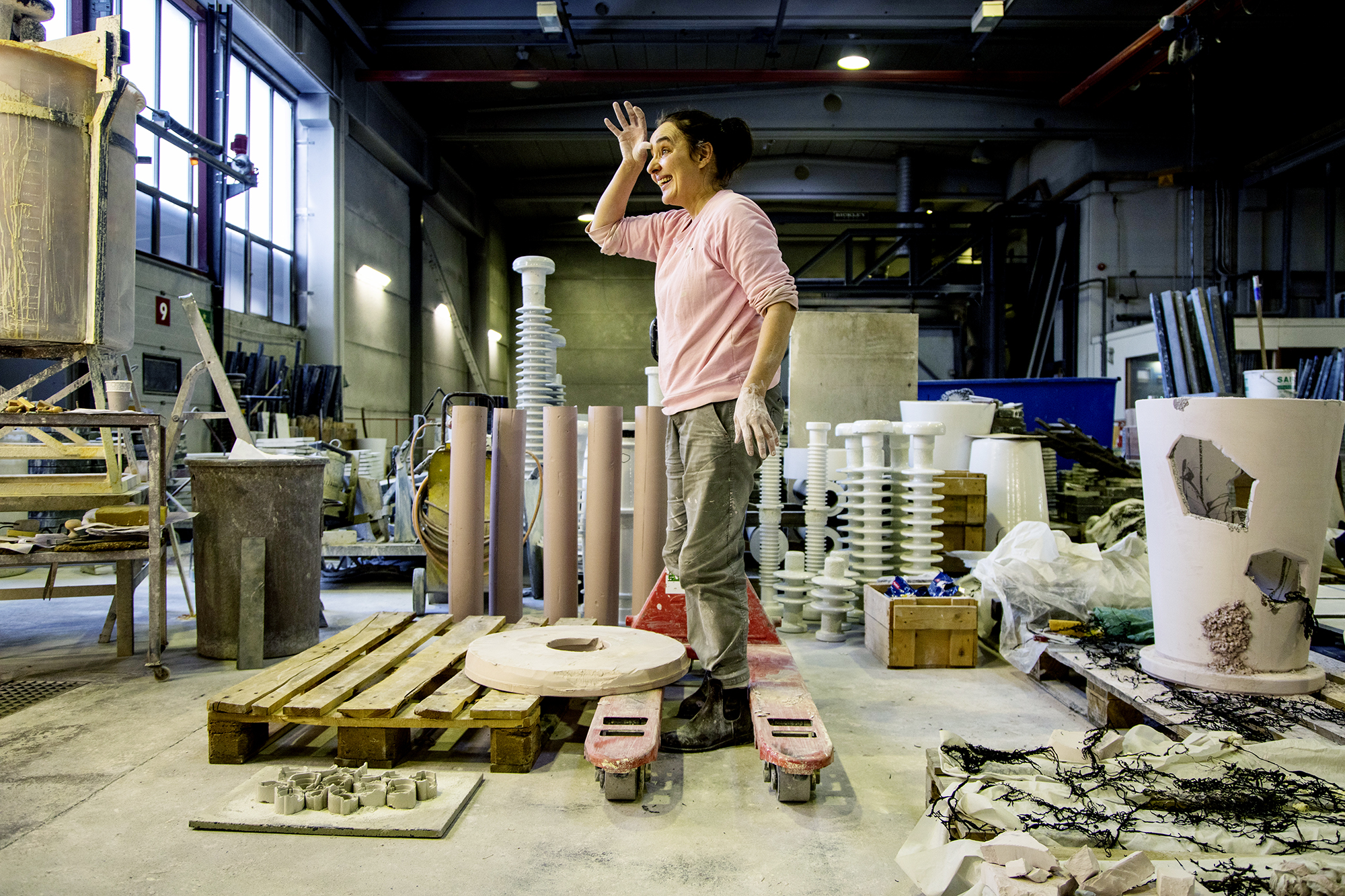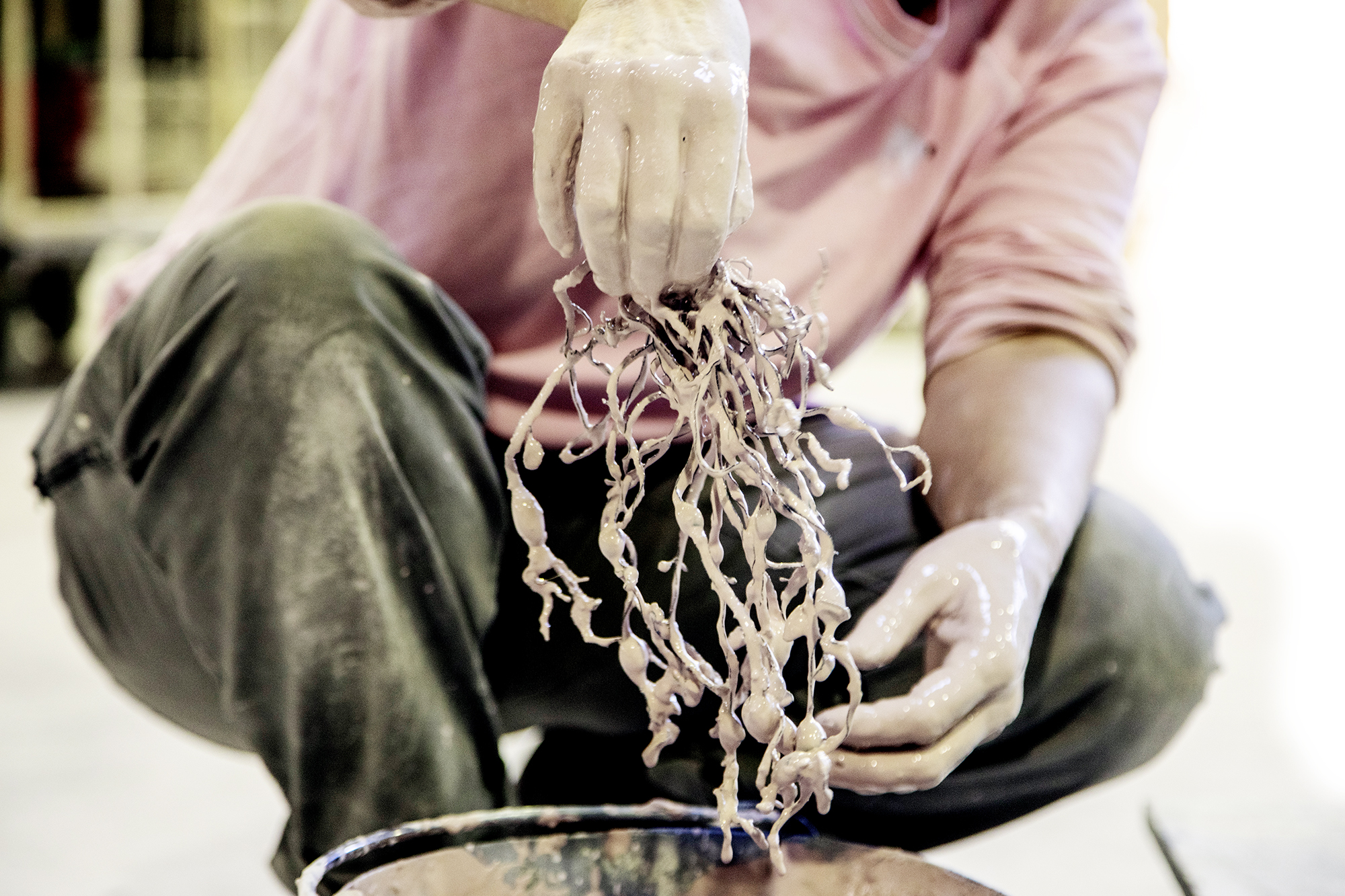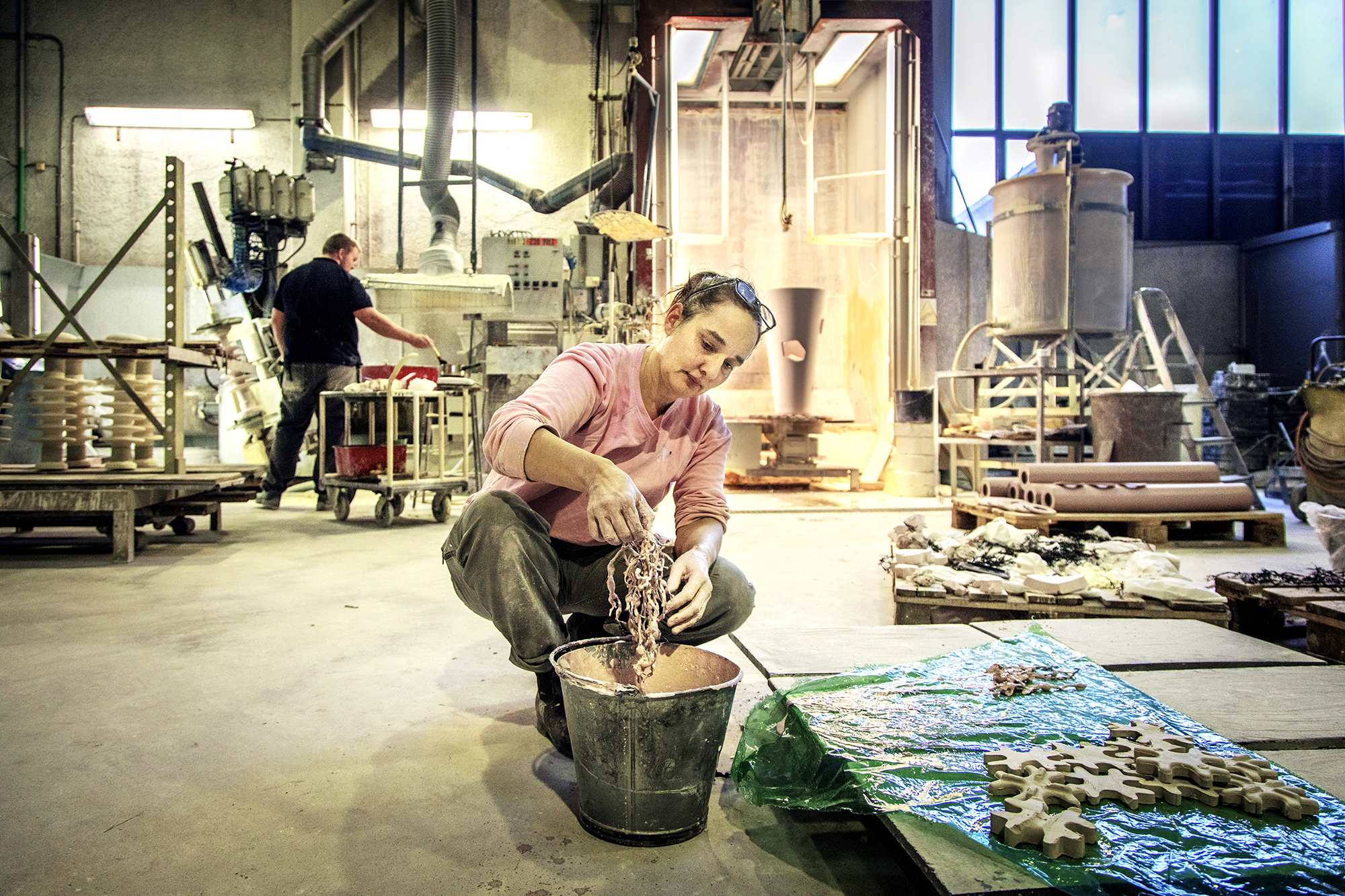
Starfish and seaweed on technical porcelain brick. From experiments at NIVA research station Solbergstrand by Elin T. Sørensen. Photo: Annike Flo
HAV means Ocean in Norwegian, and is an exhibition with the works of artist, landscape architect and PhD candidate Elin T. Sørensen.
Living together along the urban shore
Across the planet, marine ecosystems are under pressure. What’s at stake is the diversity of species and the essential roles they have within their ecosystems. We must also remember that these species are just as important for us here on land! When our cities meet the ocean, the teeming life underwater is destroyed or threatened. Humans are becoming increasingly distant from the sea, forgetting the needs of the ocean during urban development. How can we find ways to live together with others along the urban shore?
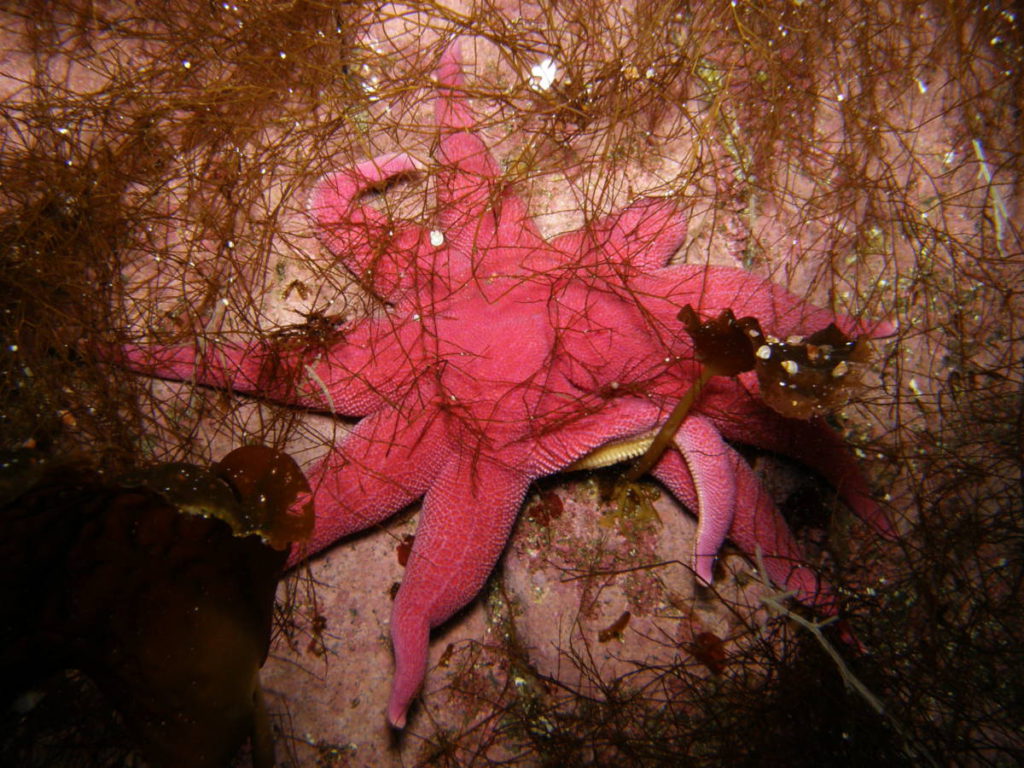

Creating with care
To create better living conditions in the urban maritime areas you must spend time with and understand those who live under the surface. This is exactly what artist and landscape architect Elin T. Sørensen has been practicing in her PhD work, which you are about to witness. She has literally gone underwater, discovering a world that is vastly different than the one on land. Here is a world with enormous powers, teeming with life from the shallow waters of the shore to the darkest, deepest trenches of the world. To find ways to create with care for life as diverse as mussels, fish and seaweed, the artist has been exploring the sea through one-on-one meetings with marine life, inspired by what famous author and environmentalist Rachel Carson calls the ethic of wonder.
Originating in the meeting between artistic vision, marine biology, tidal landscapes, and marine life HAV proposes solutions for co-existence of human and marine life at the shore.
Welcome to HAV!
Curated by Annike Flo
HAV is made possible with Support from:
Norsk institutt for vannforskning (NIVA) og NIVA forskningsstasjon Solbergstrand, Drøbak akvarium, Norsk Teknisk Porselen, gipsmaker Jean Waldemar Hoff, NMBU Realtek pilotverksted.
HAV is developed with financial support from:
NMBU Seedfunds for «Sjøplanter og fjærelandskap», a collaboration between BIOVIT og LANDSAM.
NMBUs Idea Development Fund in collaboration with ARD Innovation.
KORO Lokalsamfunnsordninga and Sparebankstiftelsen DNB for artproject «Under/sjø», a collaboration with Fjordtunet, Anne Beate Hovind og Spearos Oslofjord club for freediving, snorkeling and underwater hunting
Norwegian Artistic Research Programme. DIKU (PKU), Art Music Design, University of Bergen (UiB), Global challenges UiB for artproject «Matter, Gesture and Soul», a collaboration with Geir Harald Samuelsen.
PhD Position 2016-2020 Faculty of Landscape and Society (LANDSAM) NMBU, with supervisor Anne Katrine Geelmuyden and co-supervisor composer Christian Blom.
Ås kommune, grant for Childrens workshop “Hus I Havet”
Thank you to:
William Olsson-Tanding; Eli Rinde (NIVA), the PhD’s marine-mentor; Johan Petter Nystuen (UiO) geology-mentor; underwater advice and photo from Hartvig Christie and Pernilla Carlsson (NIVA); 3D-vizualisation and digital fabrication by artist Ivar Kjellmo; 3D-printing by artist and creative technologist Boris Kourtoukov; Klaus Bareksten and Drøbak aquarium for lending of aquarium and marine life from the Oslofjord; Michael Sagen and NMBU Realtek pilotworkshop for system design of Seafloor/Shelf; Noshin Naseri-Lordejani and Jean Waldemar Hoff for crafting Bladderwrack/signal Buoy, Ceramicists Tulla Elieson, Eirik Gjedrem and Ann Beate Tempehlaug for guidance on clay and ceramic production; Kaia Kjølbo Rød and Jorun Pedersen ARD Innovation; Hilde-Gunn Opsahl Sorteberg BIOVIT and Ioaioannis Theodorou Sorbonne/ Station biologique de Roscoff; student of landscapearchitecture Runa Tunheim; Anne Beate Hovind, Tillik Margrete Motzfeldt Haustveit, Karin Beate Nosterud; Spearos Oslofjord og Sergey Gilmiyarov for harvesting of sugar kelp; videoediting by Ivar Kjellmo and Jon Gorospe; exhibition sounddesign by Inspire to Action; risograph print by Camilla Skibrek.
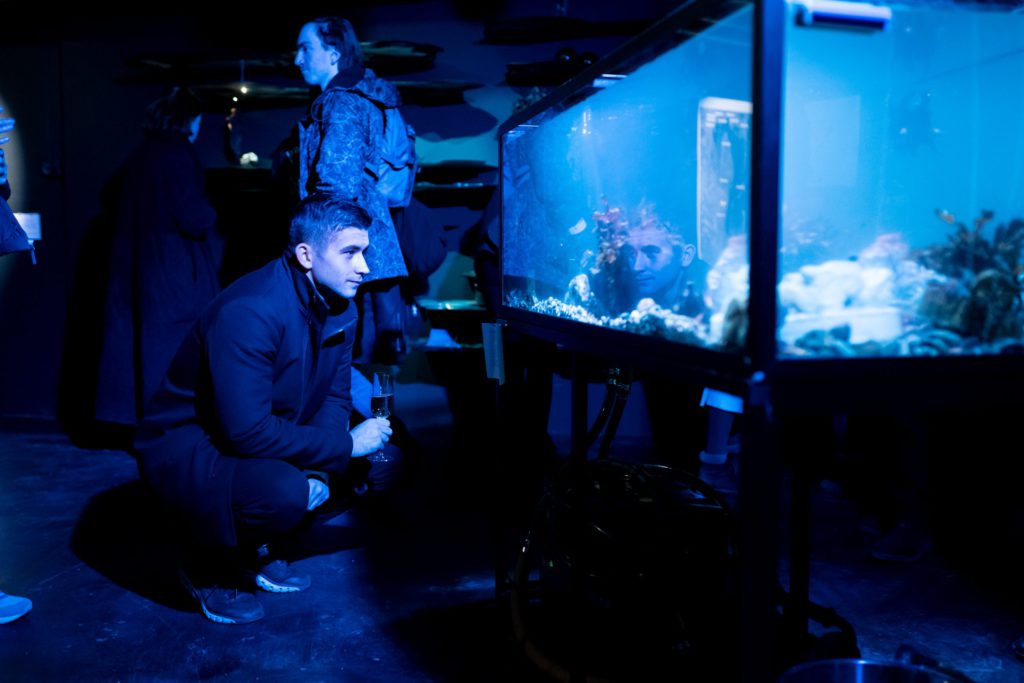
HAV opened 27th of February 2020 in NOBA’s new gallery at Vitenparken Campus Ås
Curators speech
Why we need underwater landscape architects
When I first met Elin. T. Sørensen, she showed me a landscape architecture plan drawing. Green areas, roads, plants, and residential areas were rendered carefully, but by the shoreline my eyes met a uniform, blank, two-dimensional surface. This was the ocean. No visible underwater vegetation or terrain. The illustration spoke clearly; there is nothing of interest to us here. The ocean was reduced to an elegant void and backdrop.
The Blue Planet
71% of the earth is covered in water; we live on a blue planet. This is a fact we often hear and do not think twice about. But when it is now clear that all these ecosystems, from the deep Mariana trench (where a plastic shopping bag was recently found) to the Oslo fjord (where fishing Cod is illegal because of a dwindling population) are negatively affected by us humans, well you cannot avoid feeling scared. And at this point the usual question is raised,” Why doesn’t someone do something?” Luckily, the answer is that there are.


NOBA
At this point I would like to say a few words about NOBA. Because it is not enough that someone does something, many people must do something, and they must do it together, across disciplines. Cross-disciplinary is an important keyword for us at NOBA, this is where we believe exciting innovation, creative work and solutions can happen. BioArt is an umbrella term for a wide variety of art forms that work between biology and art. BioArtists mix artistic and scientific processes, methods, approaches and tools and BioArt is often created in collaboration and conversation with other disciplines. In this way BioArt is in a unique position to ask important questions about the sciences’ role in our society, engage society in scientific innovations and discoveries, stimulate dialogue and challenge our relationship to the world around us.
NOBA is a project by Vitenparken and is unique in a Norwegian context. We are the first physical arena that focuses on bio-related arts in the country, and we are positioned in the middle of the research communities at Campus Ås. By creating an arena where artists, scientists and audiences can meet for mutual inspiration, exchange competencies and critique, new and unexpected connections and interactions can happen. This in turn can lead to new ways of doing and thinking, raise new questions, which again can lead to new solutions and reach wider audiences.
Hybrid practice
This brings me back to Elin’s work, which is created in the crossroads between art, marine biology, and landscape architecture. Here wonder, curiosity, creativity, and solutions are important, not borders between disciplines. In Norway, as most other places, urban development happens at the interest of people. Elin and HAV ask: How can we build in and near the ocean, without destroying life under the surface? In HAV we meet the kilometre large and the micrometre small – and all scales in between. Because to make big changes in the Oslo Fjord and in the ocean at large, you must understand and listen to miniscule and microscopic processes and creatures.
Snorkeling as academic method
In HAV we meet a dedication to materials. They are non-toxic, marine-friendly and recycled, like jesmonite casts and sculptural homes for marine creatures made from up-cycled technical porcelain scraps. In HAV we encounter Elin’s inspiration and collaboration partners (a myriad of marine animals, plants and more) process (Scuba diving can be academic method!) and proposals for solutions where artistic vision meets marine biology, the tidal landscape and, last but not least, the marine-dwelling beings themselves.
Annike Flo 27.02.2020

Gallery

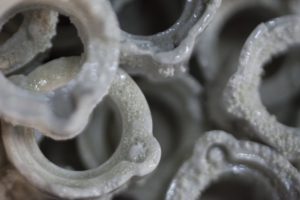
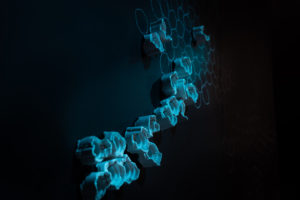
From kilometre to micrometres — land meets the sea along the coast and the shore
Land meets the sea along the coastline; The rocky shore, beaches, and seafloor down to the point where the waves no longer break. Rivers and streams carry nutrients from land to the foreshore. The tides, waves, currents, and light condition create a mosaic of habitats and ecosystems for seaweed and kelp, eelgrass and other marine plants, blue mussels, sea snails, starfish, sea urchins, crayfish, crabs, small fish, and other organisms.
The landforms, above and below the sea level, having emerged through thousands of years through the interaction of wind, wave, tidal, riverine, and geologic processes; Like erosion from glacial masses deposited from glaciers and rivers, and ocean waves forming headlands, cliffs and beaches. The shoreline yields and follows small cliffs and shallow bays, large fjords and islands, skerries and shingle beaches or soft bottoms, deltas of sand and gravel with streams and rivers flowing into the oceans.
The foreshore composes of hard rocky shore to soft sandy beaches and soft bottom habitats. The sea currents together with mineral composition, micro texture, surface colour, and nutritional conditions determine whether larvae from different organisms recognize settle or not; As sea creatures have an inherent memory of their preferred settlement surface.
The natural rocky shore of the Inner Oslofjord consists of gneiss and granite, Cambro-Silurian nodular limestone, shale and sandstone, clay, and sandy bottoms, with a myriad of small three-dimensional surface shapes forming various ecological niches. The shoreline has been changed with quays, piers, harbour basins, marinas, and other industrial Port facilities, together with residential quartiers and cultural buildings. The original inhabitants of the shoreface have become homeless.
The new waterfront with The Harbour Promenade along the inner harbor basin should mirror the natural rocky shore with its rich and diverse ecosystems. The tidal landscape at Hovedøya, one of the main isles off the fjord, with its rugged Cambro-Silurian bedrock surrounded by softer seabed can be mirrored into the renewed waterfront; Inspired by Nature’s own architecture!
Professor emeritus Johan Petter Nystuen, department of geosciences, University of Oslo, February 6, 2020
Behind the Scenes
Behind the scenes photos from Elin T. Sørensen’s experimentation and production at Norwegian Technical Porcelain in Fredrikstad. Together with marine Biologist Eli Rinde, Sørensen upcycled discarded porcelain from the factory to be used for her diversity-enhancing landscape architecture, exhibited in HAV.
